


settlement payments will not affect

We’ve got your back, so you can




settlement payments will not affect

We’ve got your back, so you can


To reduce waste and save paper, ACTLA will now be offering digital versions of the Barrister

To switch to an e magazine delivery, email membership@actla.com

Paper versions of the magazine will still be available for those who prefer it If you'd like to continue receiving paper copies, no further action is required
Interested in submitting an article to the Barrister?
We’re always looking to feature new voices and views from all industries in our magazine.
To learn more, email communications@actla.com

Writing this letter I am 4 weeks into being the new Communications and Event Services Administrator at ACTLA. I’m very excited to be entering this role and to be bringing you our Summer 2022 issue of the Barrister on Practice Management.
To begin, I’d like to introduce myself. My name is Joy Jeong, and I use she/her pronouns. I recently graduated from the University of Toronto, with my Honours Bachelor of Arts. However, I was raised in Edmonton, Alberta, so I am an Albertan at heart.

In this issue, we invited two legal assistants to present their point of view on practice management. We asked Donna Purcell to provide advice on how to transition to a paperless office, a concept we’ve all been having to get used to in recent years. Lisa Kawasaki, a law student from the University of Alberta, and the recipient of the 2021 Family Bar Diversity and Equality in Law Award, speaks on the importance of Equity, Diversity and Inclusion in law practices and actionable steps that leaders can take in their businesses to promote inclusion.
My goal with this issue was to highlight a diverse group of voices in the legal community, and I am so excited for you to read through and learn from these individuals. Each individual we’ve invited to write has a unique perspective, and it is from being open to the views of others that the greatest amount of learning is possible. Management and leadership are crucial in any business, and the advice and tips provided in the articles can be applied beyond the scope of legal practices.
I hope you enjoy reading this issue as much as I enjoyed putting it together. I am excited for what my future with ACTLA holds, and for the connections I hope to make with our membership.
Please feel free to reach out if you have suggestions for our events, our magazine, or even to just say hello.
Editor in Chief, the Barrister Communications & Event Services Administrator, ACTLA communications@actla.com


 By Keith McLaughlin
By Sahar Aboumorad
Walter
Nitin
By Keith McLaughlin
By Sahar Aboumorad
Walter
Nitin

The contents of The Barrister are for informational purposes only and do not constitute legal opinions by the Alberta Civil Trial Lawyers Association, its members or contributing authors, and should not be relied upon as such. Statements and opinions expressed by the editors and contributing authors are not necessarily those of ACTLA. The official position or views of the Alberta Civil Trial Lawyers Association will be stated as such. Copyright © 2022 by the publisher, ACTLA. All rights reserved. Reproduction of any material herein without permission of the publisher is prohibited.
All advertising enquiries should be directed to the Editor-in-Chief, at communications@actla.com

Publication Mail Agreement No. 40064387
Return undeliverable Canadian addresses to:
Alberta Civil Trial Lawyers Association 777-10339 124 Street, Edmonton, AB, T5N 3W1




The Barrister is published quarterly by the Alberta Civil Trial Lawyers Association 777-10339 124 Street, Edmonton, AB, T5N 3W1 T: 780.429.1133 | 1.800.665.7248 | www.actla.com

Advocating for a strong civil justice system that protects the rights of all Albertans.
Chair: Angela Saccomani, Q.C.
Past Chair: Maia Tomljanovic
Vice Chair: Owen Lewis
Secretary: Mike McVey
Treasurer: Jillian Gamez
Members-at-Large: Jackie Halpern, Q.C. Joseph A. Nagy Michael Hoosein
Geographical District Representatives:
North West: Michael Hussey
North East: Waverly Mussle
Edmonton: Amani Abdu Calgary: Sarah Coderre Central: Ronke Omorodion
South East: R. Travis Bissett

{Executive Director}
Jacqueline Biollo | executivedirector@actla.com
{Communications and Events Services
Administrator & Editor-In-Chief, The Barrister}
Joy Jeong | communications@actla.com
{Member Services Administrator}
Andrianna Loraas | membership@actla.com
{Bookkeeper}
Leonie Philp | admin@actla.com
Maia Tomljanovic 2021-22
Jackie Halpern, QC, 2020 - 21
Shelagh McGregor, 2019-20 Mark Feehan, 2018-19
Michael Hoosein, 2017-18
Maureen McCartney-Cameron, 2016-17
Nore Aldein (Norm) Assiff, 2015-16
Craig G. Gillespie, 2014-15
Donna C. Purcell QC, 2013-14 George Somkuti, 2012-13 Constantine Pefanis, 2011-12
James M. Kalyta, 2010-11 James D. Cuming, 2009-10
Richard J. Mallett, 2008-09
Arthur A.E. Wilson QC, 2007-08 Walter W. Kubitz QC, 2006-07 William H. Hendsbee, QC, 2005-06
Kathleen A. Ryan QC, 2004-05
Ronald J. Everard QC, 2002-04
Stephanie J. Thomas, 2000-02
James A.T. Swanson, 1998-2000 Gary J. Bigg, 1996-98
Stephen English QC, 1994-96
Anne Ferguson Switzer, QC, 1992-94 Terry M. McGregor, 1990-92
J. Royal Nickerson QC, 1988-90 Derek Spitz QC, 1986-88

The ACTLA Administration team recently went through another staffing transition. We wish to acknowledge the contributions Tamika de Gannes made, as Communications and Event Services Administrator, and wish her the best in her future endeavours. ACTLA welcomes Joy Jeong, who takes on the portfolio and will oversee the Barrister Magazine, work alongside the Seminars Committee, and continue to build meaningful relationships with our sponsors/advertisers/ presenters, etc.
As the theme of this magazine issue focuses on practice management – I thought it practical to share ACTLA Administration’s efforts to transition to a more paperless office and highlight some management tips that have helped us make good decisions or choices, including thinking through the consequences of our actions.
The guiding principles for all our decisions are rooted in the strategic plan of the association, on which the Board of Directors is currently working on. Through facilitated sessions, the Board, Executive Director, and ACTLA members have had an opportunity to articulate where we are currently as an association, envision where we want to be in the future, identify what opportunities or risks exist, discuss what our core purpose is, answer questions like ‘But why?!’, and so much more.
Once completed, this living document will allow ACTLA to be more proactive rather than reactive, it will set up a sense of direction, help to increase operational efficiency, and lay out ACTLA’s goals and objectives for the near to distant future. As far as ACTLA Administration’s efforts to transition to a more paperless office, the global pandemic was a keen reminder of the importance of a digital workplace. Although this initiative starts with technology, a digital workplace requires much more to be effective. Some of the things we had to address were employee accessibility, cyber security, and collaboration, which although is supported by virtual platforms, we adopted a hybrid model, wherein ACTLA staff still meet in person to build rapport, provide cross-training opportunities, and access equipment such as the printer/photocopier.
Jacqueline Biollo, Executive Director Alberta Civil Trial Lawyers Association
Through this, and other transitions, ACTLA Administration is committed to ensuring that our management practices, policies, and procedures support the overall goal of delivering the best results possible for our members (and stakeholders). We’ve learned a bit through trial and error but have also been able to identify some best practices to achieve specific goals and objectives (ex. membership engagement, continuous learning opportunities, advocacy, etc.).
We look forward to showing good and careful judgment as we go about our day-to-day activities on behalf of ACTLA members and all Albertans.
If you have comments or suggestions, you’d like to share regarding ACTLA’s ability to provide enhanced value-add programs or services, please feel free to contact us. We look forward to keeping the lines of communication open.
 Sincere Regards,
Sincere Regards,

This month, I celebrated a milestone birthday. I am squarely reminded of how quickly time passes. I am grateful for the gift of my family, dear friends, colleagues at ACTLA and the people I work with. My career began at Biamonte LLP, and ultimately, I returned with many wonderful years in public service. Given the number of working hours that period encompasses, I consider myself fortunate for these experiences and to call this workplace a second home.
Enjoying a workspace, is in part, to be surrounded by people who are collaborative, generous with their time and knowledge, and who share ideas. Certainly, we see that in abundance at ACTLA and through its members.

Also integral to a successful law career is sound practice management. Last edition, The Barrister focused on law, technology and innovation to help better serve our clients. With this publication, we turn our minds to effective practice. Our Law Society reminds us that we are required to comply with all legislative requirements as we manage our files and provides many resources to assist.
When the pandemic hit, ACTLA presented its Survive and Thrive series offering professional learning and practice tips on a variety of topics to enable continued practice. Since then, it has become routine to conduct questioning on virtual platforms, appear in court from our desks, use remote commissioning of
Angela V. Saccomani, Q.C., Board Chair Alberta Civil Trial Lawyers Association
affidavits, and support our clients to participate from the comfort of their personal space. While our practice evolves, its good management remains.
Early on, I learned how important it is to have effective systems in place, reliable precedents, and solid work habits. Sound practice management also requires knowing one’s limits and respecting them.
Fundamentally we must take good care of our clients. And as we do that well, we enjoy satisfaction in our work which contributes to our overall well-being and contentment.
As the year unfolds, and we celebrate milestones, I take this opportunity to congratulate all counsel who received their Queen’s Counsel designation and wish them continued success.
On behalf of our Board and Administration, and as summer begins, I invite you to take time to mark the special moments in your lives and celebrate your accomplishments.
Angela Saccomani, QC ChairWebinar - Lunch n Learn
Sept 8 - Advocacy Webinar - Half Day

Oct 13 - Technology Webinar - Lunch n Learn
Nov 8 & 10 - Masterclass
Seminars (in-person) - Full Day

Webinar - Lunch n Learn Paralegal
visit www.actla.com to register online



Since the spring of 2022, ACTLA has continued to evolve to best serve our members. We have finalized a new Paralegal/Legal Assistant ListServer, modified ACTLA’s online store so that it is easier than ever to begin a membership with ACTLA, and added two new online store products: a membership upgrade from regular/adjunct to sustaining and a Plaintiff Medical Negligence Litigation Group membership.
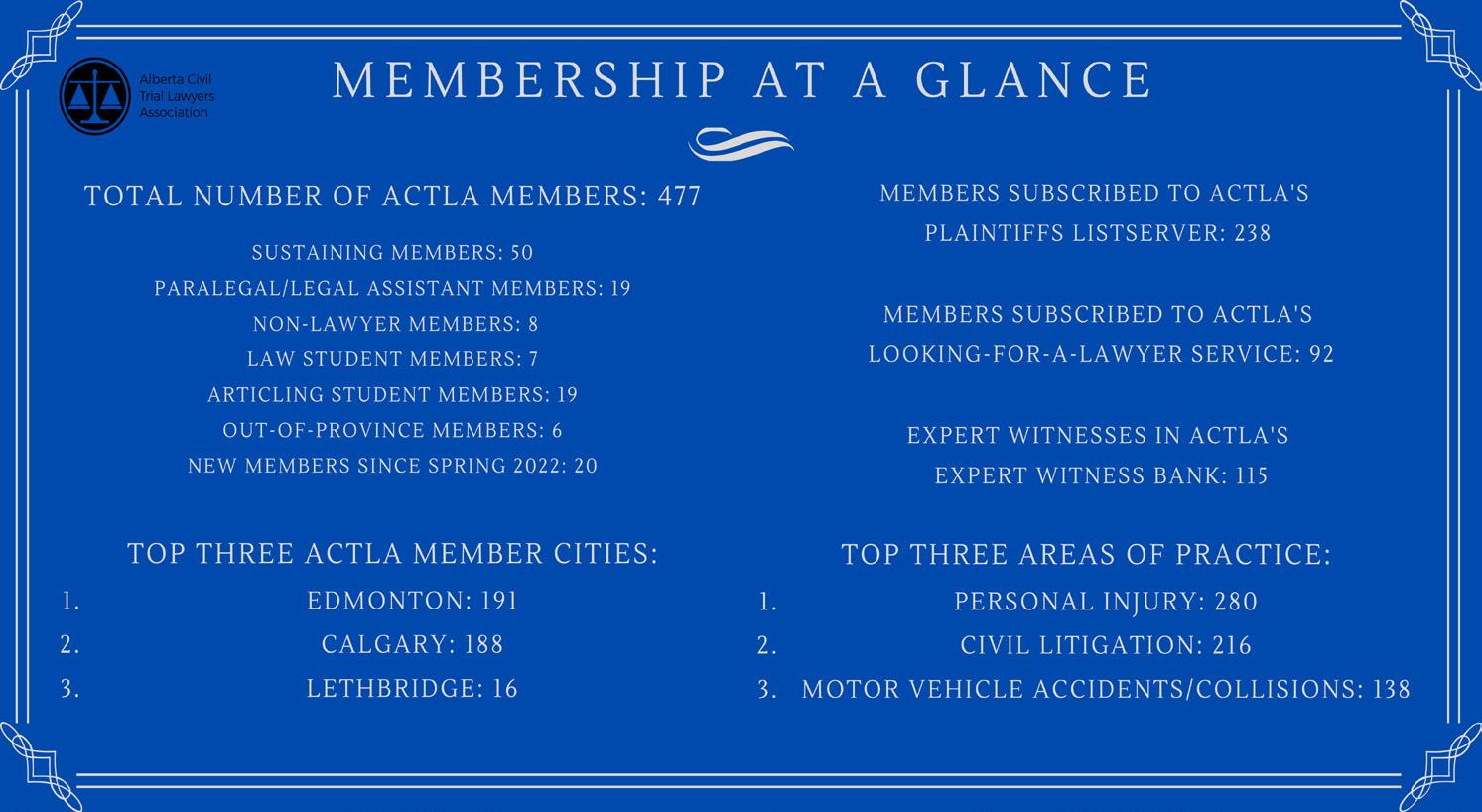

We are proud of the development of our online store and encourage you to visit our store (at actla.com under “Public Resources”) to purchase a membership with ACTLA, donate to Access to Justice (ACTLA’s initiative to support projects relating to the legal community), upgrade your membership to sustaining (for members who support ACTLA above and beyond the call of duty), or subscribe to our three services available exclusively for ACTLA members. One such service is our Plaintiff Medical Negligence Litigation Group – available to ACTLA members who can certify that they represent the plaintiff(s) in medical negligence cases –where members enjoy their own ListServer, teleconference learning sessions, and networking opportunities. ACTLA members representing the injured or persons whose legal rights are jeopardized can also purchase a subscription to ACTLA’s Plaintiffs ListServer where they can share information amongst colleagues. Finally, ACTLA members can purchase a subscription to our Looking-for-a-Lawyer online referral service so that any member of the public visiting actla.com can easily learn more about you and your services.
Another valuable resource available to ACTLA members is the Expert Witness
Bank. Found on actla.com under “Member Resources”, the Expert Witness Bank is home to 115 expert witnesses from across Canada and beyond who are knowledgeable in a variety of fields ranging from agriculture, to mechanical engineering, to product liability, and more. If you would like to join the Expert Witness Bank or recommend an expert to join, please contact membership@actla.com.
Behind every organization is a team of individuals whose hard work and support enable the organization to flourish. I am honoured to belong to such a team, who has recently gained a new member with the addition of our amazing Communications and Event Services Administrator Joy Jeong. I am looking forward to continuing to work alongside this talented team in growing our organization and continuing to provide our members with topical services that help your practices thrive.
Andrianna (Andi) Loraas she/her/hers Member Services Administrator Alberta Civil Trial Lawyers Association membership@actla.comAndrianna Loras Alberta Civil Trial Lawyers Association

The Alberta Civil Trial Lawyers Association (ACTLA) dedicates specific funding to support ‘Access to Justice’ initiatives. ‘Access to Justice’ initiatives are funded through a combination of donations and membership levies in order to provide sustainable funding to see projects through.

But what are ‘Access to Justice’ initiatives and why are they important?
In a nutshell, these initiatives are government relations, public communications, and ongoing work on legislative issues that are relevant to the Association and its members.
Support for this work is critically important. There’s an old saying in government relations: if you’re not at the table, you’re on the menu.
Groups like the powerful Insurance Bureau of Canada (IBC) continually invest in government relations
and public communications and use their significant financial power to advertise to consumers and lobby governments for changes to auto insurance in ways that always benefit the insurance industry bottom line, and restricts the rights of Albertans to access courts and receive appropriate compensation.
If not vigilant on ‘Access to Justice’ issues, the profession can be blindsided by legislative changes. The most recent example of this is from 2018 when the Government of Alberta, due to lobbying from the IBC, added temporomandibular joint injuries, as well as physical or psychological conditions or symptoms arising from sprains, strains and whiplash injuries to the Minor Injury Regulation.

Because groups like the IBC and its on-the-ground allies like the Insurance Brokers Association of Alberta (IBAA) are continually investing money, time, and effort into government relations, public communications, and legislative lobbying – it’s important that ACTLA respond in kind.
Over the past few years, ACTLA’s investment into ‘Access to Justice’ initiatives has paid dividends - most notably on the debate surrounding no-fault auto insurance. Back in 2019, the Alberta government seemed determined to implement a private, no-fault auto insurance system in the province.
A government-appointed Automobile Insurance Advisory Committee, that included proponents of no-fault insurance and former industry executives, unsurprisingly concluded that injury settlements and litigation costs were to blame for rising insurance premiums and recommended the government move to a no-fault insurance system.
ACTLA effectively engaged with Ministers and MLAs to share that no-fault insurance would fail to achieve the Government of Alberta’s desired objectives and instead result in a more costly insurance system for Albertans, with reduced rights for individuals, and lower standards of care for Albertans injured in automobile accidents.
FAIR Alberta, a coalition of Albertans including concerned consumers, medical professionals, injury victims, and ACTLA also initiated a public communications campaign to share with the public information about why nofault insurance was not right for Alberta. This included large investments in television, radio and social media advertising, op-eds, press releases, participation in media interviews, and public polling.
It turns out the more Albertans learned about no-fault insurance, the more they became opposed to it.

In June 2020, a poll funded by ‘Access to Justice’ funds showed Albertans opposed key aspects of a “no-fault” system. Almost 70% of Albertans said that losing the ability to sue an at-fault driver’s insurance company through no-fault insurance is less fair than the current system. 66% said that treating those responsible for traffic accidents the same as those not at-fault (a defining feature of no-fault insurance) is less fair than the current system, and 63% said they would not support a hybrid no-fault insurance system where every driver would have a nofault insurance policy, and be given an option of paying an extra premium to have the ability to sue an at-fault driver’s insurance company for damages.

Overall, the work of FAIR Alberta, with the support of ‘Access to Justice’ funds has helped reach millions of Albertans through paid advertising since 2019 on television, radio, print and social media.
As we look ahead to the rest of 2022 and 2023, ‘Access to Justice’ work remains critical. With a United Conservative Party (UCP) leadership race and looming election in 2023, lobbying and concerted engagements with Alberta’s leading political parties is critical for ACTLA. The IBC

will be actively engaging with UCP leadership candidates and sharing policy proposals with both major parties. ACTLA must execute a pre-election lobbying and public communications strategy to ensure that the perspectives of the IBC are countered and that leading political parties and the public are informed of the Association’s positions and how proposed reforms from the insurance industry would affect Albertans’ civil rights.
Thus, as we move forward, ‘Access to Justice’ remains as important as ever.
‘Access to Justice’ funding is crucial to effectively executing political outreach, education, and relationshipbuilding activities with the UCP leadership candidates and top officials with the NDP; to counteracting policy positions from the IBC; and for ensuring FAIR Alberta is successful in fulfilling its role of functioning as a public communications counterbalance to the IBC.
Without sustained vigilance to ‘Access to Justice’ issues, ACTLA and its members risk being on the menu rather than sitting at the table.


































Leverage your business and maximize client claims. Talk to us about Expert Financing.
Expert assessments are a large part of your disbursements and a huge draw on your operating cash flow.
Use our capital. Not yours. Fund these expenses, defer payments until settlement, while getting access to our roster of Independent Medical Expert partners, across Canada.

No interest for 24 months
• We establish a line of credit, based on your specific needs
• Utilize any of our partners to source an expert or service
• The partner completes the service and sends us the invoice
• You pay Rhino upon settlement
It’s Simple! Call us to find out how we can help you, better leverage your business.
1-888-291-4488
to contact one of our client service representatives or visit us at www.rhinofinance.com


As a legal assistant who has worked in a variety of offices over the past 25 years, I have learned that taking what you already know, whether it’s from school or previous jobs, and being open to trying new things will serve you well and allow you to manage any law practice efficiently.
The following are my top 5 practice management tips:
Get an efficient tracking system in place. Whether tracking things manually or with a computer program, it is important to be able to easily find out what steps have been completed and the next step for each file. I have found that creating a Master File List that sets out (at the very least) the following is helpful in managing your workload:
date
You can add additional columns for anything else you feel needs to be monitored.
When you start working at a new firm, make the time early on to find out what technology is available as that can make your work life significantly easier. For example, make sure to explore what each computer software program is capable of doing. There may be easier ways to get a summary of past or future limitation dates that don’t involve checking each file. Also be aware of any
“Sometimes just “talking it out” turns on the lightbulb and suddenly the answer to the problem you were trying to solve becomes clear!”
By Lola Schneider, Legal Assistant at Cummings Andrews Mackay LLP (CAM LLP)
systems that provide a “back-up” so that important dates and files don’t get overlooked. Consider yourself fortunate if you work for a firm that utilizes a central database that keeps track of numerous details of each file (eg. Names, addresses, phone numbers, etc.) that can then be merged with precedents and templates to create letters and other documents. This is a great time-saver, as well as reducing the chances of errors being made when typing out documents. Just make sure you are entering all of the information in the database correctly or you will find yourself with the same mistake popping up over and over again!
If you don’t get your instructions in writing, make sure to write out the verbal instructions as you have understood them. Then clarify exactly what is required. A little extra time taken at this stage could save you a lot of time later, especially if something wasn’t clear and what you provided was not what was requested. I’ve heard of the saying “measure twice and cut once” - in this case it would be “confirm twice and complete once”.
Don’t be shy to ask questions when there is something you are not sure about. Ask your co-workers, ask your lawyer, ask the person in the accounting department… Yes, you can even ask the clerks at the courthouse if you cannot find the answer anywhere else. Just remember that everyone is extremely busy, so be gracious and thank people for their assistance. Sometimes just “talking it out” turns on the lightbulb and suddenly the answer to the problem you were trying to solve becomes clear!
Become proficient at internet searches. It may take a few tries to get the search words just right to find the information you are looking for but don’t give up – the answer is out there! Again, don’t be afraid to seek out someone in your office that is the “resident expert” and get them to help you. Before you know it, people will be coming to you to help them!
The business of law has become extremely fast-paced and the ability to manage your time and your tasks as efficiently as possible is key to keeping the files moving and the clients happy… and yourself sane.

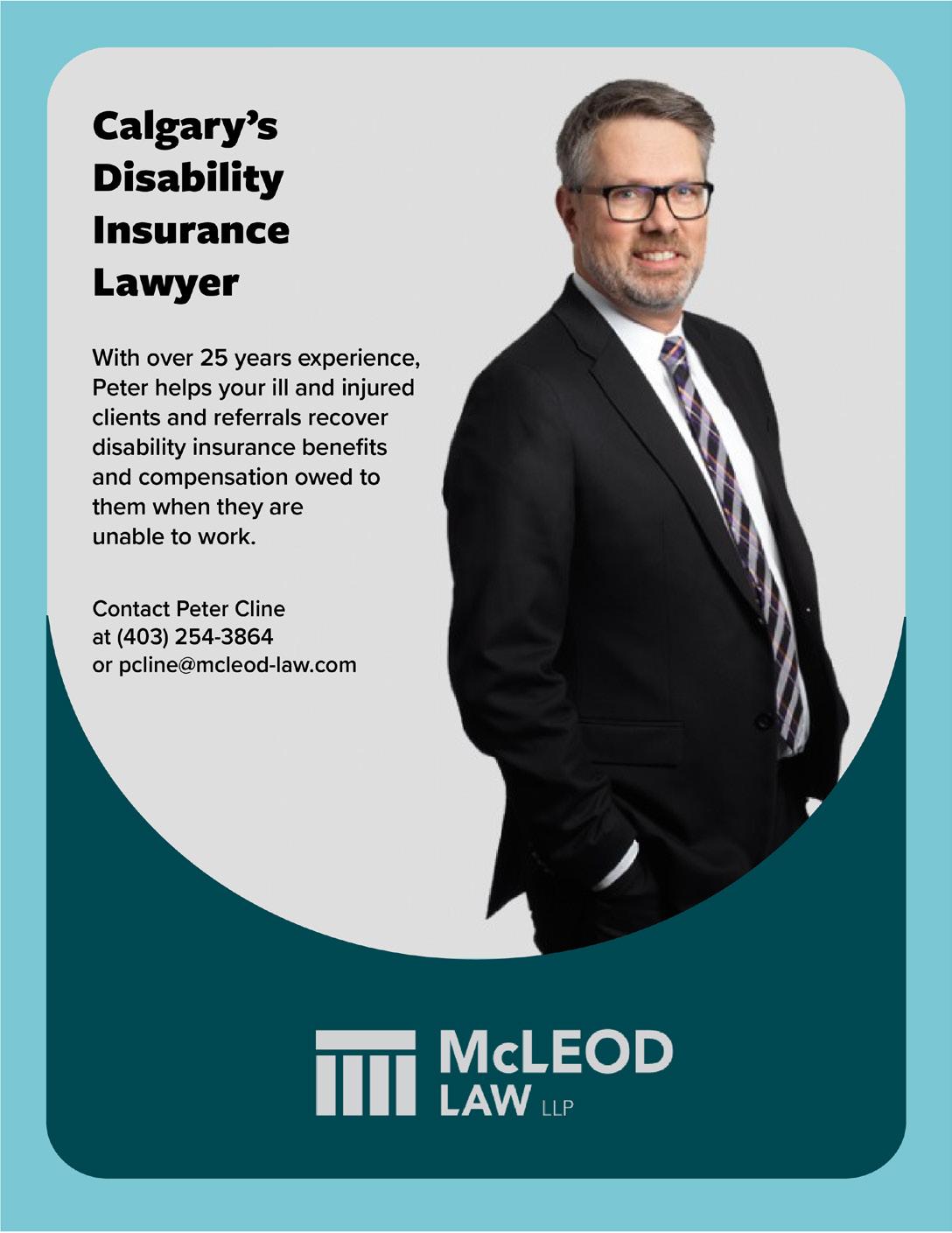




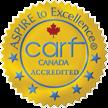

A few things came to mind when I was reflecting on the key factors needed to become a successful professional in the legal world: time management, clear communication and an understanding of ergonomics. Like myself, junior legal assistants that are fairly new to their jobs, may not pay enough attention or just simply underestimate the importance of these few things. If I could go back, I would have wanted to know just how important they would become in my daily routine in the workplace.
One of the ways a junior assistant can stay up to date on daily or weekly
task lists is by having a personal system in place. Whatever works for you to get a task done. For example, having a one-stop shop for all things precedent-related – whether that being for letters, memorandums or legal forms – will save you time. Putting together my own personal, organized precedent system helped me become more efficient when drafting documents, especially when under a time crunch. This method helped immensely when I first started working as there were many new things to learn and tasks to complete, and there are just not enough hours in the day to start from scratch every time the same task came up.
Clear communication is key when working as a new legal assistant. It is important to learn and understand what is expected from you and if

that has not been clearly communicated to you by the lawyer - it is up to you to follow up. “How” and “when” your lawyer wants a task completed should always be clearly communicated between a lawyer and their assistant. The “how” questions will naturally fade over time, especially if you have a personal system in place as certain tasks will get repetitive. For myself, the “when” question seems to come up the most as being aware of a deadline plays a big role when prioritizing my work. If you have clear communication between a lawyer and assistant then you won’t miss deadlines, you won’t get confused about what is requested and you won’t find yourself drafting things more than once.
Another important thing to remember is to pay attention to your physical health.
“Putting together my own personal, organized precedent system helped me become more efficient”
I find that assistants tend to underestimate how important it is to maintain their health, so they are able to handle the demands of a busy workplace. We get caught up in wanting to “get the job done” and do not pay attention to how our bodies feel until it is too late. The concept of ergonomics is something I personally was not familiar with during my time in school and, unfortunately, I had to learn the hard way that it was equally as important as the job itself!
Legal assistants play a very important role in the legal process but becoming an excellent assistant does not happen overnight.


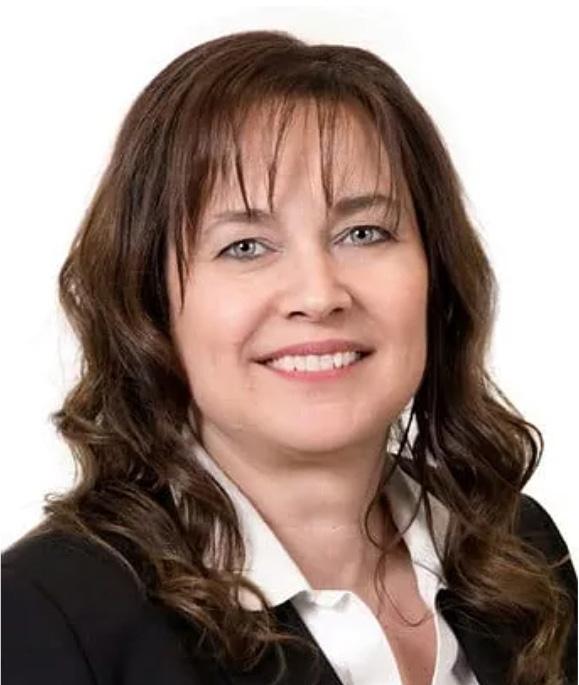

Going on three years of social distancing, remote conferencing has become somewhat of a norm among the legal profession. This has often been accompanied with increased digitization across law firms and the court system. With so many of us having been forced to take that first leap thanks to the pandemic, perhaps now more than ever, law firms should consider going all the way with digitization and creating a paperless practice. In this article, I will analyse the ways in which a complete digital transformation will make things better for law firms and their employees, and some of the ways your firm can overcome the barriers towards full digital transformation. I first created remote office capacity over two decades ago to juggle law practice, family and community and am not sure I would have been as successful without adapting
available technology to my advantage. In December of 2019 we decided to become fully paperless (perhaps a premonition given the pandemic around the corner.
Since July 2022, I have “leapt” into a fully cloud based practice to take advantage of the opportunities afforded by digital transformation.
The benefits of going fully digital are numerous, but I will start by examining them from a financial perspective.
Unlike paper files, digital records take up no physical space and there is no cost to replicate and transfer. By getting rid of creating the paper (I am not yet shredding any evidence or copies of evidence sent to me), your firm
“As time goes on, the pressure to fully move away from paper filing will only build, so it is better to get started sooner than later so you won’t get stuck at the bottom of the curve.”
can save on office space, which could either allow you to expand without increasing rental costs, or simply permit you to move your practice without worrying about access to transit or courier services. If you’re so inclined, your firm can even take advantage of remote conferencing and digital filing systems to get rid of the physical office completely.
Shifting to a paperless system will also eliminate the overhead costs of printing and photocopying, and the exponentially faster rate of transfer for electronic documents reduces filing time, which can help both with meeting deadlines and prompt communication. Additionally, programs like Microsoft Word and Adobe Acrobat offer you alternative ways of marking up and comparing documents digitally. With added tools like word recognition (OCR), it can be easy to convert paper scans into digital documents, making them and their text searchable and easily edited. Secure digital signing technologies (eg. DocuSign, Clio’s HelloSign) also enable you more flexibility in coordinating agreements.
By applying these technologies, you can significantly increase the efficiency of your firm, saving both you and your client’s time and money. We find that most entities where we request records will accept electronic signatures.
Reducing the amount of paper and ink and related appliances in use can also significantly boost your firm’s environmental footprint, something that can aid with branding and outreach. The legal profession is often accused of being stuck in the past, but with more firms trying to move past the use of paper, we can show that the legal profession, just as much as everyone else, is working towards a better, more carbon neutral future.
From a more human perspective, reducing the amount of paper in use at your firm will also reduce the amount of mundane and repetitive work that lawyers and staff will have to engage in, such as photocopying, mailing, and trying to decipher other people’s handwriting. By freeing them to do more of the engaging and creative parts of their work, eliminating paper can be a way to boost worker productivity by maintaining their interest.
Putting matter files fully onto the cloud also allows lawyers and staff more remote work choices, reducing commuting time and improving their quality of life by giving them more flexibility in managing their work life balance, a common struggle in the legal profession. Many young lawyers enter the profession at the same time as they are starting new families. By going paperless and increasing your firm’s remote work capabilities, you increase your firm’s capacity to accommodate these and other needs of your staff. Happy staff are loyal staff, so improving the working conditions via digitization can assist in decreasing the costs and lowered productivity associated with training new staff.

Going paperless does not have to mean your firm will no longer work together in the same space though. The point of going paperless is to take advantage of the flexibility it offers, so that your team can better coordinate a work environment that works best for all.
For a busy litigation practice, the less “touches” to a record, the more efficiencies. We have established a process whereby the records come in through mail (and are scanned, via photocopier or our handy desktop scanners) or electronically, we immediately save it under our naming system, and use

Adobe Pro to OCR (optical character recognition, court requires this as well, so they can edit). Then we apply Bates numbering (automatic numbering) and save it in an Affidavit of Records electronic folder (and add it the Affidavit of Records document). We also making a working copy that we can highlight and comment on the document. We also extricate key portions, for instance the x-ray reports, etc. Work smarter, not harder.
Digitization may also become part of your client’s expectations as they reduce their carbon footprint and look for ease of receiving services. I recall my accountant wanting me to print and sign tax documents in the first month of the pandemic. Historically I would just adapt to their non-paperless old habits. It might take a few days as I had to organize being by a printer, signing, scanning and returning (which means delegation given my lack of manual ability to use much of the office technology, and staff had been sent to work from home). They quickly learned to adapt and now I can sign from wherever whenever on any device. I like that. Our clients are busy or at a distance and like simplicity and flexibility. Or not… we consider ourselves a hybrid firm to ensure those clients that do not like technology or do not use it can be accommodated. I met a proud self-proclaimed luddite who refused to attend a meeting via Zoom for instance.
Clients may not want to pick up records nor incur courier costs nor want to store the paperwork.
One thing to remember is that e-mail is insecure so a move toward using a secure document portal is important. A client portal that is password protected is also possible via some legal software. Cybersecurity and privacy are important factors for a law firm to keep in mind.

I do not know how I would have juggled work and volunteerism and two competitive dance daughters travelling the continent without my remote office capability. I believe many more of our members will not abandon this career through the efficiency and flexibility offered by remote work. Many lawyers are demanding these options for various reasons.
Tsedal Neely from Harvard Business School has authored Remote Work Revolution: Succeeding from Anywhere, 2021, that I recommend as a good read, including tips on managing remote teams. The advantages are extensive. My first advantage about a decade ago was having a staff member move with her husband a distance that was too far to drive. As I was remote, I offered her that option. We have celebrated over a decade together. Pre-pandemic I saw here every two weeks. Now I just see her at social events. I can also use virtual assistants for overflow versus hiring a whole new staff member, keep my overhead contained. It opens a global pool of talent potentially.

I have declared myself a “legal tech evangelist” as I believe we can retain more talent and improve access to justice exponentially with the technological tools we have before us and that are being developed. Currently, other jurisdictions are leading the way. As Alberta positions itself to compete on the world stage in the technology and innovation sector and tries to make good on its promise to diversify the economy, it is important that we have a justice system and legal profession that is “state of the art”. Digital ID’s and signatures and streamlined processes will assist many of the backlogs we have. Alberta has the talent and assets to lead in this sector but the profession has to ensure it is advocating for the legislative tools and technological resources we need so we are not left behind.
Of course, when so much of your files are stored as paper, it can be daunting to envision converting all that backlog into digital files. That’s fair. But chances are, thanks to the pandemic, your firm has already made moves to digitize many aspects of your practice. The key then is to focus on how to expand these approaches into other areas of your practice and to stick with the changes. You don’t have to become paperless overnight. If you are photocopying a file, just scan it instead and save it digitally and you will not need to copy it again for your various experts or for a
brief. For records, the Adobe Pro software allows for the adding of Bates page numbering.

Setting up a new digital office will require establishing new workflows and organization standards. This is something your firm is going to want to figure out early on, so your digital library and processes stay consistent and easy to manage. The point of going digital is to make things easier on your firm, so try to aim for the easiest, most simplistic solutions for your organization. Don’t get too caught up with all the shiny new software out there.
Identify clearly what your firm’s needs are and focus on only integrating technology that serves your purposes. You want to limit your technology stack as much as possible so that it’s easy to ensure everything stays compatible and you’re not trying to learn how to use too many different systems. Change management is most important to keep your team on board. Instructional videos and office learning modules are helpful as everyone learns at different speeds, especially when trying to survive a busy office practice.
It’s important to keep in mind though, that even if a process or technology does not work out initially, abandoning a software does not have to mean abandoning your digitization efforts completely. Keep trying new things and tweaking new processes till they work for you. Again, you are not expected to go paperless overnight. Making mistakes is fine, in fact, perhaps mandatory to the learning process. The important thing to remember is to be resilient and persist and be positive and grateful to those around you joining on the journey.
Some of you might be concerned about the fragility of digital documents considering potential problems like solar flares and power outages. That is completely reasonable.
You can keep some paper backups if you need. Just do not let them become the main medium in use. You can also back up to more than just one cloud storage.


The courts are also digitizing, so it is just a matter now of keeping up or being left behind. As time goes on, the pressure to fully move away from paper filing will only build, so it is better to get started sooner than later so you won’t get stuck at the bottom of the curve. For similar reasons, as you work on building your digital practice, it’s important to keep an eye out for new technology developments and to keep urging the profession to move along with you. The rate of digitization by the courts will have some determinative effect on how fast you can go paperless after all, so it’s important to keep track of their transformation and to try to push for changes.
At the end of the day, your firm will only digitize as far as you and your team are willing to push it, so the onus is on you to make that decision and to stick with it. Technology is just a tool, and the ability to use it to realize your firm’s true capabilities will still depend on your ingenuity and persistence. But for those of you willing to push towards the future, the sky’s the limit.
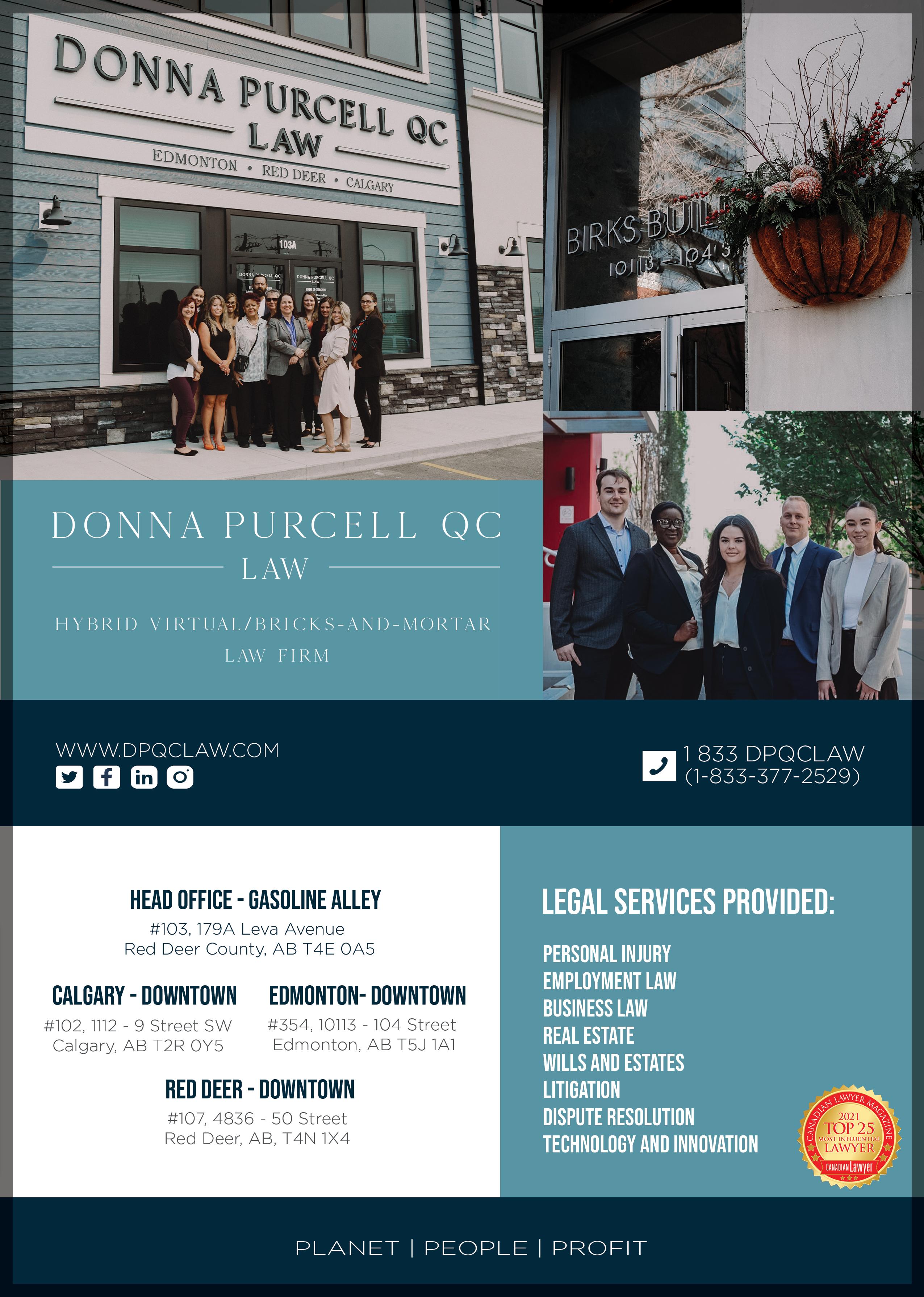
 By Lisa Kawasaki Ralstin, Law Student Intern at Veria Law, 3rd year Law Student at University of Alberta
By Lisa Kawasaki Ralstin, Law Student Intern at Veria Law, 3rd year Law Student at University of Alberta

Recipient of the University of Alberta, 2021
Family Bar Diversity and Equality in Law Award
As Black Lives Matters, Gender Equality, LGBTQIA2S+ Activism and various other social movements gain traction, equity, diversity, and inclusion (EDI) has been receiving more public attention. While there have been more initiatives to increase EDI in recent years, the history of the legal profession has been one of privilege and elitism.1 Women and racialized lawyers are currently grossly under-represented at the top of the profession and in leadership positions within firms.2 Disproportional compensation is most pronounced in minority women lawyers.3 Those identifying as Indigenous Peoples and those with disabilities are also under-represented in the profession compared to the Canadian labour force.⁴ This
data suggests that the EDI initiatives are still insufficient in the legal profession. To remain leaders in society, the legal profession must adapt and incorporate EDI initiatives so that our profession continues to represent our client’s needs and continue to uphold the public’s confidence in the legal system.
There is extensive research indicating the positive impacts of EDI in the business context.⁵ These impacts are relevant in the practice of law. After all, law firms are also a business. Human resources and bottom-line profits are
1 Navjot Kaur, “On Lack of Diversity in the Legal Profession” (9 June 2020), online: Canadian Law of Work Forum <https://lawofwork.ca/on-lack-of-diversity-in-the-legal-profession>
2 Deborah L. Rhode, Leadership for Lawyers, 3rd ed, (electronic: Aspen Publishing, 2020) at 407
supra note 1
Canadian Centre for Diversity and Inclusion, “Diversity by the Numbers: the legal profession” (30 November 2016), online: (pdf) <https://ccdi.ca/media/2019/dbtn_tlp_2016.pdf> at 27-28
supra note
“EDI is necessary to ensure that the legal profession continues to represent the diverse composition of the public that we serve”
important issues. Research has shown that companies with greater gender diversity have less employee turnover and higher morale.⁶ Companies with diverse and inclusive work cultures have less instances of interpersonal aggression, less discrimination, less sexual harassment, greater job satisfactions and greater loyalty to the company. Diversity reduces groupthink maximizing creativity, productivity and accurate decisionmaking. Diversity increases a company’s reputation and goodwill. In general, diversity is associated with greater fiscal performance.
EDI is necessary to ensure that the legal profession continues to represent the diverse composition of the public that we serve. How can the legal profession uphold the public’s confidence in the legal system or embrace the concept of fairness and equality under the law when systemic barriers prevent diversity in the profession itself? This is even more concerning when we consider that individuals requiring legal representation tends to be those who are marginalized and face systemic barriers themselves, such as racialized groups, immigrants and those of lower socioeconomic status.7
Furthering EDI is essential to uphold the rule of law and promote anti-oppression.8 Clients seek lawyers who they trust to represent their interests.9 Sometimes it is difficult for those from privilege to see the invisible barriers and microaggressions that are lived realities of some clients. Shared experiences would allow for competent advice that considers
the client’s culture, socioeconomic status and other backgrounds that are influencing the client’s dialogue and decisions.1⁰ Various perspectives need to be represented to ensure a fair and equitable legal system. Otherwise only the wealthy or majority views are being advanced and are creating legal precedent. A diverse group of lawyers would support the administration of justice by adequately representing clients from diverse backgrounds.
EDI in the profession further supports greater access to justice and enhances our professional duty to uphold the public’s confidence in the legal system. Canada is a multicultural country with a significant immigrant population. Many of these individuals require legal representation at some point in their lives but face language barriers. The legal system is already complex to navigate for English-speaking populations, language barriers act as a further barrier in accessing justice. Lawyers who can speak their language can more adequately represent such clients and therefore support the client’s confidence in the legal system to provide a fair and equitable outcome.
How can we support greater EDI in the legal profession?
There are bottlenecks to EDI at all stages of the legal profession, from admission into law schools to becoming a partner at a firm. Before the legal profession can be more diverse and inclusive, the systemic barriers faced by lawyers and law students must be eliminated at each stage of the profession. The impacts of the EDI efforts currently in place may not be immediate but will be felt as the law students and junior lawyers become established in their career. Law schools should continue to address systemic barriers preventing entry into the profession. Law firms and lawyers should incorporate EDI into their practice by supporting mentorship, reviewing compensation, hiring and promotion structures within their firm, and combatting the stereotypes of what a lawyer should look like.

Mentorship is an important initiative in addressing barriers to EDI. Junior lawyers and law students can access support, advice, opportunities and various other “social capital” through mentorship.11 However, there is a lack of diversity in available mentors which creates a vicious cycle.12 Because of the lack of mentorship, racialized or female law students and junior lawyers do not have the same learning opportunities and support as their Caucasian male counterparts. This can lead to a certain firm culture that reflects predominantly Caucasian male perspective. Law students and junior lawyers who do not conform to this culture are seen as not “fit”. Some law students and junior lawyers may feel pressure to blend in to fit into the firm culture and be hired. Others are often not hired because of “fit”.13 Those who are hired may feel isolated and marginalized. Some may even leave the firm or the legal profession entirely. As a result, there are more Caucasian male lawyers who are partners and well established in their career. This contributes to the lack of diversity in the legal profession and exacerbates the lack of mentor pool. To break this cycle, law firms can review their hiring process for inclusivity. Firms can also support mentorship programs external to the firm if they do not have sufficient mentors from diverse backgrounds within their firm. They can encourage their senior lawyers
to volunteer as mentors and their law students and junior lawyers to participate as mentees. Mentorship programs such as the ones run by the Canadian Association of Black Lawyers (CABL) or by the Federation of Asian Canadian Lawyers – Western (FACL Western) and South Asian Bar Association (SABA) have a larger mentor pool that can better meet the needs of various law students and junior lawyers.

Firms can also review their compensation and promotion structure for any systemic barriers preventing advancement of diverse lawyers. For example, the billable hour compensation structure can act as an invisible barrier to those who have familial obligations.15 Despite efforts for gender equality, women are still primarily responsible for “domestic work”. One American survey found that women are seven times more likely to work part-time or leave the labour force due to childcare than men.1⁶ Focusing on the billable hours rather than the value of work provided may disproportionately affect female lawyers than male lawyers. It may also prevent lawyers from engaging in non-billable work. Therefore, reviewing compensation structures may allow female lawyers to remain in the profession and may encourage lawyers of diverse backgrounds to engage in non-billable work such as mentoring the next generation of lawyers.
Promotion structures at law firms are often tied with the billable hour system. Those who can work late nights and weekends are often viewed as competent, dedicated and hard working. These individuals are rewarded with promotions and considered for partnership. However, this type of partnership track may be incompatible with familial obligations and can disproportionately affect women. Women who take maternity leave may be behind by a year compared to their male counterparts. They may not be given a particular file or lose files because they will have to take a leave prior to the file concluding. Many may also need to take work home and leave at a certain hour to pick up their children rather than work late nights in the office. This can create a perception that they are not hard working, available or dedicated to the firm.1⁷ Women who

reach the partnership table are often those who decide to forgo having a family. Because they do not have familial obligations, these women may not understand the barriers faced by those who have children. While having women at the partnership table creates a perception of diversity, it does not truly encompass inclusivity and equity if they must sacrifice having a family to become a partner. Firms can better support EDI by creating a compensation and promotion scheme that focuses on quality and value of work. They can also provide accommodations such as flexible working hours or opportunities to work from home so that those with familial obligations are able to remain and thrive in the legal profession.
Lawyers and law firms can further contribute to EDI in the profession by changing the image and stereotype of the legal profession. While great strides have been made, the legal profession continues to be predominantly Caucasian. Even the public and potential clients embrace the stereotypical image of a lawyer. Documentaries interviewing racialized lawyers highlight this harmful stereotype.18 This affects the perceived legitimacy and competency of non-Caucasian lawyers. Education is key in addressing this issue. Lawyers, judges, and legal support staff should receive training in EDI as well as cultural competency. Special interest groups such as CABL, FACL Western, and SABA also play an important role in education and advocacy. To further combat public perceptions, social media posts and articles can spotlight the important work of diverse lawyers within the legal field, within a firm or within various legal associations.
Finally, further research and greater data collection is needed to better assess the impacts of EDI initiatives and to identify areas requiring greater efforts. For example, data suggests that entry into the profession may be the main barrier for Indigenous Peoples and those with disabilities since they tend to successfully progress through their career once in the legal profession.19 Such data indicate that EDI efforts should be focused on law school admission and retention rather than firm practice. Additionally, long-term impacts of EDI initiatives need to be monitored to determine its success. For example, firms
can collect data on who they hire and who receives a promotion to determine where the bottleneck to EDI exists. They can address this bottleneck through EDI initiatives. They can then collect further data to assess success of such initiatives.

It is important to incorporate EDI in the practice of law. By supporting EDI, lawyers can better represent their clients, enhance access to justice and support the public’s confidence in our justice system. EDI can lead to greater profitability, productivity and employee retention. Incorporating EDI into the practice of law is an investment into the future that will have positive impacts to the firm to the legal profession in general.




Is it, “Whoever dies with the most toys wins?” If you win the rat race, are you are still a rat? If you get used to a certain lifestyle, does that lifestyle become your “golden handcuffs”, forcing you to continue in a job that you hate?
3,000 years ago, Solomon, (c. 970 to 931 B.C.), wrote: “A good name is to be chosen rather than great wealth, good favor more than silver or gold”, and, “Wealth gained quickly will dwindle away, but the one who gathers it little by little will become rich”.
I have seen that many lawyers who cut corners in order to make money, and especially a “quick buck”, often do not last for the long term. Many end up disbarred, disgraced, sued, in trouble with the Canada Revenue Agency, or are subject to knowing smiles when their name comes up. Some do not, but why take that chance?
Relationships are a part of “success”. You can have a lot of money and a great reputation, but if you have lost your spouse and children, and have no friends, then you will have a very lonely old age.
So, how does one build a reputation? One email at a time. One phone call at a time. One brief at a time. One day at a time. It is slow, hard work, and can be lost with one intemperate comment.
Your skill, knowledge and especially your reputation are your true “Stock in Trade”. Reputable counsel who respect you will tell you things that they otherwise would not, and will work with you towards mutually resolving your respective client’s problems, instead of going to war on every file. This benefits your client through a fairer and quicker resolution, and a lower fee. On other matters you will have to go to war. In that case, your reputation will make a huge difference to a judge in a close decision.
Why does society grant lawyers a monopoly that lets them earn an above average income? I suggest four reasons: trust; skill; knowledge; and, service of the client as the first priority. If we as a profession lose track of these principles, society will remove our ability to self-govern or will further open up the provision of legal services by non-lawyers.
Trust. It all comes down to whether other lawyers, the court, the public and your clients trust you.
Skill and knowledge. Read. Read articles inside and outside your practice area. Do things that may not be profitable if they will provide you with experience or a chance to practice your skills. Attend seminars and social events, for in talking with people you will learn if you listen more than you talk.
As you are working on your reputation, don’t forget that law is also a business, otherwise you will be out of business.
The lawyer’s business cycle is: Get the files in, do the work, and bill the work at a profit. Rinse and repeat, over and over.
Our business is about both people and money. The best work comes through existing relationships from other lawyers and past clients. It is much easier to get new work from an existing contact than to develop a new contact.
There is a hierarchy of touch in building relationships:

(1) Face to face.
(2) By phone.
(3) Handwritten note.
(4) Email is last.
Encourage each client to think of you as “My lawyer”, and that if their friend needs legal help, you know the best lawyers to refer them to if you can’t help them.
Attend social functions where you meet other people and other lawyers, especially lawyers in other fields of practice. Lawyers in your field will the refer files that they are conflicted out on, or that they do not want. Lawyers in other fields send the best work.
“Credentialing” is Barb Cotton’s buzzword on how to be seen as being an expert in your field. Give talks. Write papers. Tell people what your specialty is. As you do, people will start to think that you know what you are talking about, and will begin to see you as the “go to person” in that area.
Help out your clients. Notarize simple documents for free. (But avoid documents outside your area of expertise that are better served by specialists).
Help out other lawyers. Share your knowledge and experience, your research and precedents. Most will remember it, and most will try to return the favor if you ever need something. This enhances your reputation, and

enhances the level of expertise of other lawyers and thus of the bar.
Charge a fair fee. If you reduce your fee, let the client know it. Avoid fee fights at all costs. It costs more of your time to do the taxation, and then there is the usual Law Society complaint and verbal or internet libel. If you are not paid, then unless you purposely took the risk to do the work for free or at a reduced rate, it is a reminder to get or refresh an adequate retainer next time.
What about your staff and your associates? Treat them as you would like to be treated if you were in their shoes. This is usually (but not always) repaid in loyalty. Every staff person that leaves costs you in lost productivity and institutional knowledge. Create a written staff manual dealing with holidays, days off, benefits, etc., so that you are consistent.
Hire a bookkeeper. Most of us went to law school to practice law, not to do accounting. A former Alberta Bencher’s Rule # 1 is, “The most important person in your office is your bookkeeper”. You can do all sorts of stupid things as a lawyer, but if your trust accounts are off, you will waste a whole lot of time dealing with the Law Society, and it is the best way to get disbarred without mercy.
Hire an Office Manager. This is the second most important person in your office. This frees you from “Adminstrivia”, so that you can focus on generating new files and billings.
Keep an eye on the money. Cash flow is critical to the business. Keep an eye on your financial statements at least monthly. Revenue less overhead equals profit, a.k.a. “Stayin’ Alive”.
Staff salaries are usually the biggest expense, but good staff are worth their weight in gold. At the very least, they
allow you to take a holiday without calling the office every day. Rent is usually the second biggest expense. If you are an associate, don’t begrudge a portion of your billings to the firm that pays the overhead for you.
Capital is the next big issue. This money has to be saved over time or borrowed, so learn to live frugally as you build up your capital.
Be wary of unsecured debt, but set up a line of credit for the lean months before you need to use it. When you earn a big fee, don’t spend it, but save most of it for the eventual billing droughts that are guaranteed to come.
Leave some unscheduled time each day and each week. Something unexpected always comes up.
Keep your clients informed. Communicate. Make them a part of their own file. (They know the facts better than you do). Be punctual for appointments. Don’t keep the client waiting.

Answer your phone – personally is best; by an assistant is next best. A new client will often rather call the next person on their list than leave a message.
Block off uninterrupted work time as an appointment if needed.

Block off fun time and family time as an appointment.
Use meaningful “to do” lists. Get the files out of your office. Diarize them and put them in the file room. Try to only have 1 file on your desk at a time. It reduces your stress level.
Develop a precedent system for checklists, letters and forms. Each time you do a new task, do one document for that task, and one blank document for your precedent system. A precedent system lets you leverage your time for the next time this task arises, and makes you and your staff more efficient and less likely to miss things. If the precedent is ready to go, you are less reluctant to draft that document.
Spend time with senior lawyers. We like to talk, and you will learn from our past successes and mistakes. The founding lawyer of our firm was one of my mentors, and taught me much of what I know. I regularly have supper once a month with other senior lawyers in my practice area to discuss practice issues, and value this time immensely.
Make time for yourself to avoid burn out. Take regular holidays every year; summer, Christmas, and if possible, some holidays in between these major periods. Take one day off a week to rest and refresh. I use Sundays. A day off lets you recharge for the next week. Look after your body, your mind and your spirit. Exercise, read, go to church.
Serve the greater community. Volunteer. You may or may not pick up clients, but more importantly, you will get to meet wonderful people.
Don’t look down on the “little people”. You can make their day. The court clerks and orderlies talk to the judges about the lawyers.
In conclusion, what does “success” look like? Think about it now. Then make every decision in light of your conclusion. I urge you to consider Solomon’s wisdom, and to focus on your reputation.

“Could the defendant take advantage of the sweet excuse that he was not able to see the diagram/ shared document clearly at the time of questioning, even though he confirmed he could at that time?”
Post pandemic developments have pushed us to explore new frontiers of legal practice. One of them is questioning remotely by electronic means. This article deals with some of the issues my colleagues faced as Plaintiff counsel while questioning the Defendant on the issue of liability in a bodily injury matter. The Plaintiff’s counsel tried to share a Google Earth picture with the Defendant while questioning via Zoom and asked him to identify the site of the collision and further clarify the particulars on how the event occurred. About half-way during the questioning, the counsel discovered that the Defendant was, in fact, attending the zoom questioning via his smart phone. As such, the Defendant was having difficulty in seeing the shared documents referenced by Plaintiff Counsel
Now the Plaintiff’s counsel is in a catch-22; do they object and adjourn the questioning or continue despite the obstruction. An adjournment would further delay the litigation process and increase the costs for re-scheduling the questioning. It would also result in complete waste of counsel’s time as that day is wasted. It also raises fair concerns as to whether the answers provided by the Defendant, so far, are proper? Could the Defendant take advantage of the sweet excuse that he was not able to see the diagram/ shared document clearly at the time of questioning, even though he confirmed he could at that time? Would the Plaintiff’s counsel have another opportunity to question the Defendant, afresh or continued, with at least a laptop or desktop computer before him?

One of my colleagues mentioned that he once questioned a Defendant who was sitting in a parking lot using his smart phone. Concerns of poor reception, poor camera handling or battery failure are also present. In addition, concerns about finding multiple errors in the transcripts particularly wordings of undertakings or missing undertakings, were also shared by counsel when they were questioning the Defendant who was using a smart phone. The consequences of having inadequate network, quality of audio and visual and the ability to share documents could be brought up at trial. It creates a potential practice management problem for Plaintiff’s counsel.
There is no doubt that by using a small screen at the questioning the conduct of the Defendant was improper. There are also concerns about the Defence counsel for not properly advising their client and the Plaintiff’s counsel in advance. But, despite the concerns noted above, many counsel simply continue with the use of smart phones as post COVID19 business-as-usual despite these shortfalls as it might be convenient.
So, what can we do to ensure that the time and resources are put to their best use and reduce the risk for improper depositions at such questionings?
The Alberta Protocol for Remote questioning Revised 05/05/2020 provides that parties select and agree to a technology platform for proper conduct of questioning. There are many options such as Skype, Cisco Webex Meetings, Google Hangouts, Microsoft Teams and Zoom. The platform selected must meet a minimum criterion of free to use, multiuser, reliable and good audio, and video quality, sharing of screen, muting, separate rooms/ waiting rooms, secure encryption, and no time limitation of sessions with an option to terminate the session by the host.
Part 3 of the Protocol particularly prescribes for the “Equipment and Settings”.

Each Participant will secure for that Participant’s own use during the questioning, the following:
• A desktop, laptop, or tablet computer (not a mobile phone) with a webcam, microphone, and speakers (headsets are recommended for sound quality and reduction of echo).
• Participants should use a wall outlet to avoid a laptop battery failure and adjust power settings as required to prevent the questioning being interrupted by any auto sleep or other power saving settings.
• A secure and stable internet connection (i.e. not public WiFi).


• A quiet room with a door that can be closed to exclude third parties.
• Participants should avoid backlit environments (e.g. a window behind the Participant) and any sources of external noise.
• The table or desk and surroundings should be clear of
Receive expedited access to the best expert assessors in the country, when and where you need it. Viewpoint court-qualified experts are credible, highly experienced and well respected in their fields. Contact us today at 1-877-462-4216 ViewpointWest@vp-group.ca

distractions and unnecessary items and should reasonably replicate a setting in which a Questioning would normally occur.
Part 7 of the Protocol mandates the acceptance and adoption (with any agreed upon amendments) of the Protocol at the outset of the questioning.
Evidence rules and admissibility are taken care by Part 9 of the Protocol including, deeming the questioned party present in Alberta irrespective of their actual location and admissibility of evidence under Rule 6.22 of the Alberta Rules of Court. The rider to part 9 of the Protocol requires “substantial compliance” to the Protocol for the admissibility of the transcripts, stating:
Provided that this Protocol is substantially complied with, no party will object to the admission of transcripts of questioning or portions thereof that would normally be admitted in court proceedings if the questioning took place in person
The Protocol provides for an adequate protection structure for the process, and admissibility of the evidence obtained via remote electronic questioning. In addition to choosing the technology platform, the Protocol also provides for flexibility of any amendments thereto.
It also states that, Lawyers should advise their clients of any known or potential security risk related to the use of the platform selected. Parties or their lawyers should confirm with the Court Reporter that the chosen platform is acceptable when booking the Court Reporter.
To avoid any shortfalls or admissibility issues, all parties must ensure adoption and strict compliance of Alberta Protocol for Remote questioning in advance by agreement.
Insisting on the protocol will eliminate surprises at questioning. Confirming the technology details with the opposing counsel in advance would take away any surprises such the use of a smart phone on the actual day. If the Defendant tries to appear by cell phone, then the counsel can cancel/adjourn the questioning on record for non-compliance of the agreed upon Protocol. Any such adjournment would also help the Plaintiff counsel to create some duplicative preparation or would still leave an option to proceed with the questioning reserving the right to put forward the ‘shared’ documents at a later date, which were not possible to share due to the use of smart phone.
From a practical perspective, the takeaway from the above is:
• Adoption and strict compliance of the Protocol
• Avoid surprises by prior agreement
• If facing a surprise, either adjourn the questioning or continue reserving your right to question the Defendant on the documents which you were not able to share.
• Sometimes continuing questioning and permitting the use of a smart phone, but with noted objections, is a practical alternative from a time management perspective.
I would like to thank my colleagues and friends at the Alberta Civil Trial Lawyers Association for their shared wisdom and experiences.
 John D. R ichard s, FCIP PUBLIC A DJUSTER
John D. R ichard s, FCIP PUBLIC A DJUSTER
I am a public insurance adjuster. I provide law firms with personal injury settlement proposals. I can and I will help you.
Email: john@richardsonyourside.com Phone: 780 418 4344 www.richardsonyourside.com
Our Divorce Financing provides a line of credit to your family law clients so they can pay their legal fees on time, allowing you to cover operating expenses more effectively.
Our loans are simple — we finance divorce proceedings in advance of the completion of the separation agreement and arrange financing based on your client’s projected equalization. Our client service team works with you to lend quickly and fairly, so your divorce files can move forward without delay.

 By Kirsten McMahon
Larry Herscu, President The Easy Legal Group of Companies
By Kirsten McMahon
Larry Herscu, President The Easy Legal Group of Companies

Divorce Loans, a new solution launched by Easy Legal Finance Inc., provides financing to divorce clients so their cases can proceed without interruption or delay. By helping clients alleviate the financial pressure associated with divorce, Divorce Loans also assist with the expeditious payment of fees so lawyers can support more matters and cover operating expenses.
“Divorce Loans are simple,” says Easy Legal President Larry Herscu. “We finance divorce proceedings in advance of the completion of the separation agreement and arrange financing based on your client’s projected share of the matrimonial or family property.”
Established in 2013, Easy Legal is a specialty lender focused on providing credit solutions to the legal sector. Best known for servicing the personal injury sector, it rolled out Divorce Loans earlier this year, making the firm one of the fastest-growing lenders in the legal space.
Herscu notes that the firm took a measured approach to enter the family law sector, and conducted extensive research and consulted with some of the country’s leading family lawyers before launching the solution.
Financing a divorce — particularly when contentious or high conflict — can be difficult for a client when their matrimonial assets are tied up or difficult to access. A Divorce Loan provides a tailored line of credit to help the client pay for legal fees and living expenses while waiting for their share of the matrimonial or family property without dipping into investments or retirement funds.
Easy Legal’s client support team and Divorce Loan Adjudicator work with the client and their lawyer to secure the documentation required to lend quickly and fairly, so their divorce file can move forward without delay.

A client starts the process by filling out a loan application online or calling Easy Legal’s toll-free number. They then speak with one of its customer service representatives, who reviews the client’s unique situation and collects more information.

Once the client signs off on the application, Easy Legal speaks with their lawyer to secure the information and documentation regarding the divorce file.
Then, a Divorce Loan Adjudicator will assess the file to evaluate the claim and determine the appropriate loan amount.
“Our Divorce Loan Adjudicators are integral to the application process,” says Herscu, explaining that these experienced family lawyers have more than 20 years of experience.
“Using their extensive professional experience and legal knowledge, they will assess the client’s allocation of family or matrimonial property to determine the appropriate loan size,” he says, noting the minimum loan amount is $5,000, and there is no maximum. However, clients should only borrow what they need.

Once approved, the client and their lawyer sign the loan documents. Then, Easy Legal e-transfers the funds to the client’s preferred financial institution or directly to their lawyer to cover legal fees.
Will a Divorce Loan work for my client?
Not every client will need or want help financing their divorce proceedings — but some will benefit from Divorce Loans. For example, a loan is ideal for those files involving:
• Income inequality (one spouse does not work)
• Self-employment or entrepreneurship
• Equity tied up in the matrimonial home
• Funds locked into retirement accounts
• Limited access to loans from family or friends
• Funding specialists — such as private investigators, business valuators, or forensic accountants — to advance a case

Because it is not uncommon for a client to run out of available funds based on the length of their divorce proceedings, Herscu says a Divorce Loan can provide the boost they need to complete the process.
When a client starts running out of funds to pay for their divorce, it can make an already stressful situation even tougher to deal with, says Herscu.

“Divorce Loans can help them regain control, receive their fair share, and move forward. Divorce is hard. Financing it shouldn’t be.”
The terms of the loan are transparent and straightforward, he says.
“No payments are required until the end of the three-year term of the loan or once they have received the payment of their share of the matrimonial or family property,” he says.
Currently, Easy Legal is offering Divorce Loans in Alberta and Ontario. But, again, this is part of its measured approach to the sector. “Divorce loans are a relatively new concept in the Canadian marketplace but have been established for quite some time in the United States, the United Kingdom and Australia,” Herscu says.
Growing its core business is not unfamiliar territory for Easy Legal. Over the past four years, the firm has acquired several key competitors. It has also expanded its products beyond settlement lending to include various law firm lending services such as disbursement, assessment, and file financing.
What has not changed is Easy Legal’s trademark compassion and professionalism and its dedication to access to justice, says Herscu. “Our clients often go through some of the roughest patches in their lives, whether it is divorce or an injury from an accident. If they are unable to pay their legal fees, that stress is only compounded.”
If you have clients that anticipate a family or matrimonial property payment but are struggling to pay their legal and personal bills, this may be a solution to consider. Give us a call at 1-866-800-2100 to discuss.
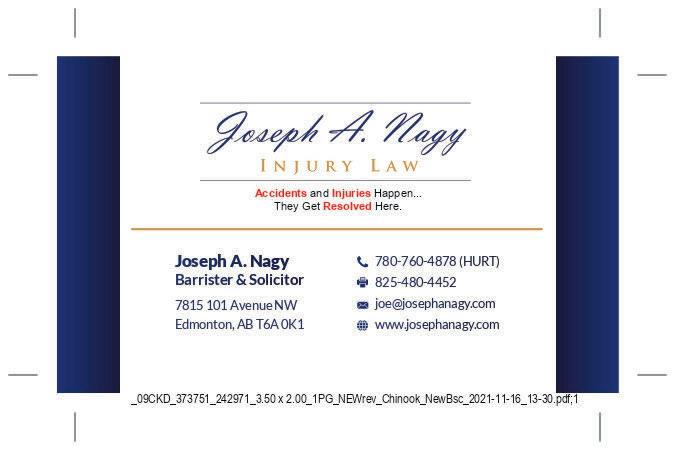
The Easy Legal Group of Companies is a specialty lender focused on providing credit solutions to the legal sector, including its clients and service providers.

Centre 101 has office space for lease. It is very suitable for anyone wanting to run their solo law practice, PC, or small firm. My Prof. Corp works out of this building, and I use approximately 1/3 of the building Building is about 5000 square feet and fully renovated There are approximately 10 offices available My numbered company owns the building. You would benefit fr om referrals, as I often get inquiries for other legal services such as corporate, commercial, criminal, family, immigration, wills and estates, general civil litigation, real estate, and
Joseph

and Managing Director, British Columbia & Alberta
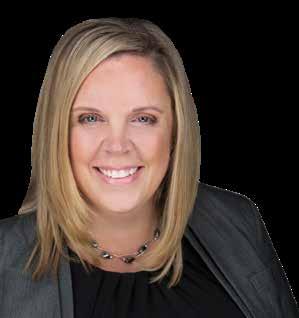

is known for building strong, lasting relationships based on mutual trust and solid advice. She works transparently and honestly to connect assessment and rehabilitation allies. With over 20 years experience in the medical assessment industry, she is a court-qualified medical legal expert, clinical consultant, and evaluator in the areas of functional capacity and cost of future care.

“ Successful Treatment means a Return to Pre-Injury Status with a strong intention to do so.”

It has been historically understood that two main forms of rearend collisions exist: HISRIC (high-speed rear-impact collision) and LOSRIC(low-speed rear-impact collision).
For purposes of this article let’s take a simpler look at LOSRIC in relation to the mechanism of Neck Injury and what happens: After The Impact.
When a patient is referred to a healthcare provider for injuries sustained in a motor vehicle accident, the idea is to treat for acute injuries, pending injuries, and a home care plan to cover any lingering injuries. Often seen 3X/week for 2 weeks, then 2X/week for 3 weeks then 1X week for 2 weeks etc. This is of course a simplistic view of the treatment protocol, however, many practices are so focused on new patient procedures and processes, they are negating a key mandate in their approach: A Return to Pre-Injury Status/RT-PrISt (the Barrister Issue #132 Spring 2022 page 51-53) “Successful Treatment means a Return to Pre-Injury Status with a strong intention to do so”(Dr.S.Mitha).
Our Industry/Personal Injury is one of science, clinical cases, data collection, the evolution of technology, and crash tests that are so advanced it simulates human injuries. An industry that has existed with facts, data, and statistics, begs the question? Is the variance we see in patient-patient outcome
at the end of treatment strictly due to patient variability in pre-existing conditions, provider knowledge, applied technique, and compliance?
Or has the accident industry, particularly, the Occupant injury industry-accepted better but not as it were. In other words
A Failed Return to Pre-Injury Status/ Failed RT-PrISt. No Provider ever wants to write the above abbreviation as the prognosis in the final report to the attorney and/or insurance adjuster. Those of us who work passionately in accident injury and pain-impact due to trauma are well aware it is necessary to build into one’s practice a categorical treatment model that addresses a stagnant scenario.
However, I have always believed, that before we get to the why? Let us understand the How. The best way to comprehend sustained injuries due to impact ...is to Unravel the accident:
A common hypothesis of study as related to LOSRIC stated “Occupants of vehicles may be subjected to acceleration forces that are greater than the forces imparted to the struck vehicle itself” -D.M Severy
This infamous 1955 experiment involved live person(s) seated in stationary standard-sized vehicles, then struck from the rear by similarsized vehicles at different speeds with a delta-v no greater than 10mph. What the outcome generated debunked the theory that low-speed impact causes no injury to the occupant’s cervical spine. In fact, the opposite proved true that any external vector regardless of speed can yield soft tissue injuries. We must be able to differentiate in
practice the accident industry from what I term the Occupant Injury Industry. It is largely assumed by insurance companies that soft tissue injuries occur in all motor vehicle collisions. However, how are we to embed innovation into injury treatment without bringing the patient and thereby the “person” back into the equation. If the standard treatment protocol used for WAD I and II is to remain as the status quo, we as an industry are not moving with the times. Let us remember that WAD stands for Whiplash Associated Disorders… meaning there is an abrupt acceleration-deceleration movement on the biomechanics of the cervical spine.
Since the beginning of accident reconstruction, the idea that preparedness for impact generated a ready-steady embrace of the surrounding musculature as a protective measure owns Merritt. However, take Occupant Awareness out of the equation, and being hit by a 4000lbs object is quite dire on its own.

“ As the vehicle begins to accelerate, the occupant is forced back into the seat. Some of this loading causes the seatback to flex rearward. As it does it stores elastic energy” - Croft, Whiplash Injuries
The relationship between the practitioner, patient, and attorney is vital if we are to advocate for patients to receive the right care for the right diagnosis. An exam and orthopedic testing are designed to detect “injury”. However, inflammatory response, shock, and pain threshold can very often mask the true injury. If it is a WAD III and we as the providers have reflected a WAD I or II in the paperwork, how is the insurance company to know the road to A return to Pre-Injury Status encompasses a difficult and much more cumbersome treatment plan?

Practice Management has too evolved since the pandemic. Prior to Covid, I was noticing a very problematic trend in both MVA’s and WCB.
There is a noticeable gap in what we term:
b) Daily function without fear of Re-injury
c) Return to Work/RTW-PrISt-performance was falsely believed to be healed but function was debilitated.
When a timely return to pre-injury status does not take place, patients begin to suffer from treatment exhaustion. In almost all cases I have seen, treatment exhaustion is the prelude for chronic pain development. One of the hardest aspects psychologically for a patient is the sheer unexpectedness of having an accident. The disruption to the patient’s life and their household generates with it its own stress. One way of course to minimize the physical stress is to be represented by an attorney. In the previous article, I addressed the benefits of an attorney alongside the treating Provider(s) in cases where the patient has plateaued in care.
The other way of course is to shorten treatment. Occupant injury cases can be exceedingly long and a large part is the patient is still fighting to return to their pre-injury status. Thus making it impossible for Attorneys to justify settling their cases as most patients feel they have lost so much in the process already. Through the years I have heard many people think having an accident compensates for itself. Well, unless you are hit by a garbage truck I think most in the field would beg to differ. I have seen too many beautiful spirits in patients broken and preventable secondary symptoms emerge such as anxiety, depression, weight gain due to pain with lack of mobility and financial duress due to non-working status emerge from prolonged treatment.
It is time now to welcome innovation and expertise into the chronic pain system and work with those providers, attorneys, and other institutions that believe in prevention.


One low-speed rear-impact collision should not set you back physically, emotionally, and financially a few years and I know this is possible because I see it in my own practice. The chief complaint in WADS I-III should not exist for the length of time that compensational patterns begin to emerge. Flare-ups should be predictable and expected within the treatment plan as the patient progresses to the next phase yet managed immediately so as to not set the patient emotionally back. If we embed Pain-Impact Informed Strategy at every level of treatment, inclusive of practice systems, I believe we will see patients return to work faster. However, most importantly, confidence that Re-injury will not occur, one step closer to chronic pain prevention.
After The Impact Injury Care was started in 2017 and is dedicated to the treatment of motor vehicle collisions and chronic pain due to trauma that has plateaued under current protocols. Innovation in treatment models, teaching painimpact informed strategies, better education of occupant vectors, and more incentive to prevent chronic pain have resulted in improved patient care in private practice. Successful Treatment means a Return to Pre-Injury Status with a strong intention to do so.

Barrister, Solicitor, Mediator, Arbitrator, Conflict Resolution Trainer

Member of the Canadian Academy of Distinguished Neutrals and Member of the BC Mediation Roster Society
of the Law Society of Alberta

Employee was employed by employer for 9.5 years until his employment was terminated — Employer claimed that employee’s employment was terminated for just cause because he sexually harassed female employee — Employee brought successful action for damages for wrongful dismissal — Trial judge found that employee’s actions constituted intentional and non-consensual touching of female employee for sexual purpose, but fell at low end of spectrum of seriousness given that it constituted single, brief incident and he had walked away upon realizing that advances were unwelcome — Employer successfully appealed — Parties made submissions on costs — Parties were to bear their own costs of trial, and employer was awarded costs of appeal in amount of $2,356.65 — Issue in trial and appeal was serious and important to employees and employers, but it was employers who needed to know what policies ought to have been adopted in similar situations — Employer had good cause to challenge trial decision, and it was not case of huge employer using appeal as method of avoiding payment of less than $50,000 — Whether employer elected to pursue costs given employee’s financial situation was business decision it could make.
AG Growth International Inc (AGI-Westeel) v. Dupont 2021 ABQB 793, 2021 CarswellAlta 2430, [2021] A.W.L.D. 3984, [2021] A.W.L.D. 4026, [2021] A.W.L.D. 4027, [2021] A.W.L.D. 4028, [2021] A.W.L.D. 4132, 30 Alta. L.R. (7th) 191, 336 A.C.W.S. (3d) 33, 74 C.C.E.L. (4th) 308
AG Growth International Inc v Dupont AWLD 40-3948
Labour and employment law --- Employment law — Termination and dismissal — Termination of employment by employer — What constituting just cause — Misconduct — Sexual harassment of other employees
Employee was employed by employer for 9.5 years until his employment was terminated — Employer claimed that employee’s employment was terminated for just cause because he sexually harassed female employee — Employee brought successful action for damages for wrongful dismissal — Trial judge found that employee’s actions constituted intentional and non-consensual touching of female employee for sexual purpose, but fell at low end of spectrum of seriousness given that it constituted single, brief incident and he had walked away upon realizing that advances were unwelcome — Employer appealed — Appeal allowed — Trial judge’s finding that intentional and unwanted touching for sexual purpose constituted sexual harassment at low end of spectrum of seriousness ignored Court of Appeal jurisprudence that sexual assault was at high end of spectrum — Even though employee’s assault might not have risen to level of seriousness as was found in jurisprudence, starting point for analysis had to be that it was serious form of workplace misconduct — Since trial judge’s analysis started from incorrect starting point, decision could not survive review on correctness standard.
AG Growth International Inc v. Dupont 2021 ABQB 663, 2021 CarswellAlta 1974, [2021] A.W.L.D. 3948, 2022 C.L.L.C. 210-006, 30 Alta. L.R. (7th) 181, 335 A.C.W.S. (3d) 550, 74 C.C.E.L. (4th) 297
Civil practice and procedure --- Practice on appeal — Time to appeal — When time begins to run

Brothers were found in civil contempt for failing to comply with order prohibiting parties from attending illegal public gatherings — Sanctions phase of contempt proceedings would be determined at later date — Over one month later brothers filed notice of appeal against contempt order and applied to extend time to appeal — Application granted — Contempt finding was “decision” within meaning of R. 14.8 of Alberta Rules of Court, and so running of appeal period commenced when that decision was made — Notice of appeal was not filed within time prescribed by rules — Although brothers had previously acknowledged that their proceeding with appeal might depend on nature of sanctions imposed, that was not inconsistent with their intention to appeal contempt finding in time.
Alberta Health Services v. Pawlowski 2021 ABCA 344, 2021 CarswellAlta 2533, [2021] A.W.L.D. 4692, 176 W.C.B. (2d) 161, 338 A.C.W.S. (3d) 133
Plaintiff company and defendant agreed to enter into joint venture, which may have later become partnership — Plaintiffs, company and its principal C, brought action seeking, inter alia, re-payment of loans advanced to defendant, maintaining that debts had been acknowledged by defendant by post-dated cheques drawn by defendant that were cancelled once conflict arose — Defendant maintained that loans had been repaid, and it brought counterclaim alleging that agreement was made under duress, and that plaintiff company did not perform its obligations under joint venture agreement and was in breach — Plaintiffs applied for summary judgment seeking repayment of loans and accounting; defendant applied for summary dismissal of action — Plaintiffs’ application granted; defendant’s application dismissed — Plaintiffs advanced loans to defendant — There was no proper evidence that agreement reached between K, president of defendant, and C, shareholder and director of plaintiff company, for monthly reimbursement payments was signed under duress — There was no proper direct
AlbertaWeeklyLawDigest
AlbertaWeeklyLawDigest@YourDesktop
Thepractitioner’scurrent,comprehensivesourceforAlberta judgments, AlbertaWeeklyLawDigest providesdigests ofavailabledecisionsfromallthecourtsofAlbertaandthe SupremeCourtofCanadaonmattersoriginatinginAlberta. YoucanalsoreceivetheweeklydigestasaPDFfilebyemail.
Tofindoutmoreabouttheseinvaluableservices,please contactCustomerServiceoryouraccountrepresentative.
AlbertaWeeklyLawDigest
Annualpricing$1,680
1volumeannualsubscriptionservice
50issues+aquarterlyindexannually
AlbertaWeeklyLawDigest@YourDesktop
Annualpricing$1,730
1volumeannualsubscriptionservice
50issues+aquarterlyindexannually
Orderonline:store.thomsonreuters.ca CallToll-Free:1-800-387-5164|InToronto:416-609-3800
Email:PrintProviewOrders.legaltaxcanada@tr.com
evidence at all that K was under duress — K was available to give his own evidence but he did not — Bald assertions were to be ignored — Transcript evidence of K, not yet put to corporate representative of defendant, could not be used in this application against defendant, because if it were put to its corporate representative, defendant might qualify it — Defendant could not rely on transcript of K’s evidence to respond to application — It was not up to plaintiffs to disprove duress — Clear evidence was that arrangements were essentially followed for many months, leading up to emergency loan when cheques were signed and security given in circumstances that amounted to affirmation of agreement, and letter was later sent that further affirmed agreement by suggesting that personnel changes might require modification of payments — Three cheques were signed, one was cashed, and then it was made clear that other two would not be honoured — Plaintiff was awarded judgment for full amount of cheques — Accounting was directed — At this stage request was actually production request for records that were relevant and material to plaintiffs’ claim as well as counterclaim — Request for accounting in form of production of original bookkeeping records was not fishing expedition — Balance of claim was to proceed to trial, including defendant’s claim for breach of joint venture agreement.
Cicalese v. SSMPG Integrating Services Inc
2020 ABQB 605, 2020 CarswellAlta 1895, [2021] A.W.L.D. 4091, 336 A.C.W.S. (3d) 266
Condominium Corporation No 0626935 v Stenzel AWLD 44-4268
In 2006, when defendant unitholders were one-third owners of company that owned walk-up apartment building, they cut hole through roof of their top-floor apartment and installed spiral staircase leading up to den-loft balcony room which they had constructed — Apartment building became condominium complex later that same year, and roughly 10 years later, board filed statement of claim to recover possession of roof plus remediation costs associated with returning roof to its original condition — In 2018, following order from city, plaintiff condominium corporation removed addition; replacing roof supports and restoring area where structure had been — All that remained at issue was expense of removal and remediation, and 2016 statement of claim sought ‘special damages’ of up to $125,000 plus interest and costs — Unitholders brought application regarding

limitation period for special damages claim and to dismiss remainder of condominium corporation’s action — Application granted — Limitation for all except recovery of land would have expired some time in late 2008 or possibly into 2009, roughly eight years before action was started — Continuing nature of trespass, which started in 2006, did not extend claim for damages in open-ended way until trespass was abated — It was incumbent on board to decide about rooftop structure right from start; either by approving it and amending condominium plan, or by denying it and acting — Calling cost of remediation special damages did not detract from fact that this was in personal claim that had expired.

Condominium Corporation No 0626935 v. Stenzel 2021 ABQB 733, 2021 CarswellAlta 2198, [2021] A.W.L.D. 4268, 336 A.C.W.S. (3d) 552, 35 Alta. L.R. (7th) 192
disturbances, embarrassment, humiliation, and other impacts to her wellbeing — Plaintiff had judgment for assault, battery, sexual assault, intentional infliction of mental distress, breach of confidence, and public disclosure of private facts — Plaintiff brought application for assessment of damages — Plaintiff was awarded $80,000 in general damages, $50,000 in punitive damages, and $25,000 for aggravated damages — Defendant’s conduct was intended to, and did increase plaintiff’s humiliation and anxiety, and his actions were intentional and appeared to have been done repeatedly — Defendant’s confession made to his partner when he was deployed to high-risk situation after acting secretly showed that he was aware of distress his choices would have caused plaintiff, and he attempted to clear his conscience — Here, defendant was motivated by malice — Publication of plaintiff’s private images was another form of domestic abuse she otherwise experienced.
2021 ABQB 739, 2021 CarswellAlta 2211, [2021] 12 W.W.R. 540, [2021] A.W.L.D. 4370, [2021] A.W.L.D. 4371, [2021] A.W.L.D. 4373, [2021] A.W.L.D. 4374, [2021] A.W.L.D. 4375, 336 A.C.W.S. (3d) 596, 34 Alta. L.R. (7th) 324, 78 C.C.L.T. (4th) 253
Between 2005 and 2016 plaintiff and defendant were partnered in romantic relationship and as part of her relationship with defendant she shared with him private photographs of her in which she was in various states of undress and engaging in sexual activity — Near end of their relationship, defendant confessed to plaintiff that he had posted images of her various states of undress and engaging in sexual activity online as early as 2006, and at no time did defendant have plaintiff’s consent to publish these images — Plaintiff was able to find some of these images online in early 2021 — Plaintiff had experienced significant mental distress and embarrassment as result of postings and suffered nervous shock, psychological and emotional suffering, depression, anxiety, sleep
Plaintiff FCC advanced respondent PR Inc. loan in amount of $2,650,000 to finance PR Inc.’s purchase of lands in Alberta, and loan agreement, mortgage, and four personal guarantees by respondents DW, SS, KC, and RW were executed in October 2008 — Guarantees and loan agreement were executed by KC and PW in presence of lawyer in Toronto, Ontario and loan agreement and guarantees were expressly subject to laws of British Columbia notwithstanding fact that lands were located in Alberta — PR Inc. stopped making payments on loan in April 2014 and amount outstanding on loan was $2,539,224.78 and appraised fair market value of land was $890,000 — Master’s order allowed defendants to amend their statement of defence and Master dismissed FFC’s summary judgement application, and FCC successfully appealed master’s order — Chambers judge found that statutory non-compliance argument was doomed to fail and other defences were not viable, and no trial was needed to determine that — Given choice of law and place of execution, guarantees were subject to British Columbia law and did not have to comply with Alberta legislation and Guarantees Acknowledgement Act

(Alberta) was not applicable substantively, procedurally, or otherwise — KC and RW appealed — Appeal dismissed — Chambers judge’s scrutiny of amendments was exhaustive and exacting, it included comments as to likely success of defences, finding as to whether one of defences met civil burden of proof, and noted summary judgment jurisprudence as potentially having bearing on amendments, and this was usually inappropriate — However, chambers judge considered defences in summary judgment application, and on that point, it was not found convincing that chambers judge made reversible error — Chambers judge found, based on evidence before him, that appellants were careless in signing documents, and no basis was seen for interfering with this finding, as carelessness plainly foreclosed non est factum defence.
2021 ABCA 168, 2021 CarswellAlta 1167, [2021] A.W.L.D. 3540, [2021] A.W.L.D. 3550, [2021] A.W.L.D. 3560, [2021] A.W.L.D. 3624, [2021] A.W.L.D. 3625, 28 Alta. L.R. (7th) 255, 335 A.C.W.S. (3d) 304
defendants’ ability to question plaintiff at discovery and trial and interfered with court’s supervision of litigation process — Concerns about adequacy of plaintiff’s efforts were speculation and were not enough to impugn plaintiff’s responses to undertakings — Plaintiff’s refusal to provide explanation for delay or further particulars, even on appeal, demonstrated obstinance that would further delay discovery process — Consent order concerned interlocutory procedural matter so was not binding contract, mandating remedy on breach — Outstanding undertakings concerned significant matters and material information, and defendants would likely be prejudiced at trial without it — Noncompliance with consent order was substantial and persistent over four years despite court’s intervention, and plaintiff could continue to withhold information if action not struck, creating abuse of process.
Hartson v. Park Paving Ltd 2021 ABQB 742, 2021 CarswellAlta 2267, [2021] A.W.L.D. 4266, 336 A.C.W.S. (3d) 438, 35 Alta. L.R. (7th) 176


Plaintiff suffered injuries from slip and fall in snowy carpark occupied by defendant insurance company and maintained by defendant contractor — Plaintiff brought action for damages but failed to fully respond to undertakings given during discovery even after court order, extension of time and demand for particulars — After parties agreed to consent order for discovery by specific date, failing which action would be automatically struck, defendants obtained order to strike plaintiff’s claim — Plaintiff appealed — Appeal dismissed — Although insurer was not referred to in consent order, undertakings were given for benefit of both parties, who were represented by same counsel, so it referred to entire action — Shielding responses to undertakings by settlement privilege denied
Plaintiff suffered serious injuries when he was assaulted while delivering pizza in area that formed part of First Nation Reserve — Incident was referred to defendant Workers’ Compensation Board by plaintiff’s employer, and Board opted to bring action in plaintiff’s name against persons liable for plaintiff’s losses, with defendant senior lawyer H and defendant articling student K acting for plaintiff — H and K made decision to name three individuals as defendants, but refused plaintiff’s request to include First Nation and Canada as potential occupiers under Occupiers’ Liability Act — Plaintiff obtained judgment against two individual defendants in first action, but claimed that but for defendants’ refusal he would have pursued claims against, and recovered compensation for his damages from First Nation or Canada — Plaintiff brought action against Board, H, and K, alleging that they breached statutory, contractual, and fiduciary duties owed to him in their representation of him in first action — Action allowed — H and K breached contractual duties and common law duty to plaintiff to exercise reasonable care in investigating facts and assessing available claims before making decision not to pursue claims and to address conflict in fact that arose between plaintiff and Board — Through H and K, Board breached statutory and contractual duties it owed to plaintiff in failing to allow him to take action against First Nation and Canada at his own risk and expense — Board had duty to consider plaintiff’s
interests in exercising its statutory authority, but Board did not consider or explain that option was available to plaintiff to take action at his own risk and expense — H and K’s conclusion that there was no merit to naming First Nation or Canada in first action was negligently reached as they did not have all relevant facts when decision was made.




Ivanovic v. Howell 2021 ABQB 438, 2021 CarswellAlta 1429, [2021] A.W.L.D. 3976, [2021] A.W.L.D. 3982, 335 A.C.W.S. (3d) 645, 33 Alta. L.R. (7th) 155
Estates and trusts --- Estates — Legacies and devises — Nature of estate created — Life estate — General principles
Testator died and bequeathed life estate in all land and farm equipment to his brother, with remainder interest to testator’s nephews and residual estate to his sisters — Estate applied for order for distribution and case management judge ordered section of land to be sold and net proceeds partially distributed to sisters — Brother appealed and nephews cross-appealed — Appeals dismissed and case returned to case management judge for determination of values and accounting issues prior to final distribution of estate — Case management judge had jurisdiction to deal with substantive issues and provided nephews with adequate opportunity to be heard — Dispute between brother and his nephews over whether value of life estate was fixed number or depreciated over time as his life expectancy shortened needed to be resolved — Value of life estate would affect calculation of amount brother owed to estate and amount estate owed to him — There were no matters where case management judge was clearly wrong or failed to weigh relevant factors or made errors in principle — Sale of section of land and distribution to sisters should proceed and accounting and valuation issues should be returned to case management judge.
Kachur Estate v. Kachur 2021 ABCA 343, 2021 CarswellAlta 2497, [2021] A.W.L.D. 4721, 338 A.C.W.S.
Kent v McDonald AWLD 40-3974

Buyers purchased home from sellers and executed purchase contract subject to condition of inspection — Sellers disclosed water ingress and repair on north wall in 2007 and provided reports of structural engineer retained by sellers — Inspection revealed crack on basement wall, but structural engineer advised foundation was structurally sound and buyers removed condition and took possession — Four months later, buyers determined crack extended length of west wall and to parts of north and south walls — Buyers brought action against sellers and structural engineer for damages — Trial judge found structural engineer liable for negligent misrepresentation and sellers liable for breach of contractual warranty — Judgment was awarded against defendants jointly with 75 percent of loss to structural engineer and 25 percent to sellers — Sellers and structural engineer appealed — Structural engineer’s appeal dismissed; sellers’ appeal allowed — Structural engineer was solely responsible for damages awarded and his representations were untrue, inaccurate, or misleading — Structural engineer was negligent and there was insufficient evidence to establish betterment — There was no evidence that seller was aware of problem with foundation other than water ingress and repair on north

wall in 2007 which was disclosed — Trial judge did not indicate how she determined that elongated horizontal crack, spalling, and history of water damage were latent rather than patent defects — Defects were patent given that, with information known to parties, reasonable inspection of west wall of foundation would have discovered defects later found — There was no evidence that sellers were aware of defects not visible that might render property dangerous, and they had no obligation to do more than they did.
conduct — Application granted — Board originally acted reasonably and promptly after first recorded complaints — Board did not react reasonably after leaking continued, and did not follow recommendation that all windows be replaced — Board had direct obligation to investigate and bring concerns to attention of owners — Common property had not been maintained as it should have been — Cumulative effect of board’s actions and inaction amounted to proper claim of improper conduct — Corporation was directed to replace window, repair damage to owner’s unit, and pay $5,000 in general damages for inconvenience and stress.

Lauder v. The Owners: Condominium Plan No. 932 1565 2021 ABQB 145, 2021 CarswellAlta 398, [2021] A.W.L.D. 3720, 335 A.C.W.S. (3d) 211


Owner purchase condominium unit in July 2012 and noticed leaking around windows — Owner’s first recorded complaint to board of directors of condominium corporation was in March 2014 — Board authorized work in 2014, and shortly after that owner found that more windows were leaking — Some repair work was done in 2014 to common area property but not owner’s unit specifically — By May 2016, cause of leak had still not been determined and repairs to owner’s unit had not been done — In 2017, Board levied special assessment on unit owners to cover cost of significant repairs to foundation, windows, and walls — When work was completed, one window in owner’s unit that had leaked was still not replaced — Owner brought application against board of directors of condominium corporation for damages for improper
Professions and occupations --- Lawyers — Employment of lawyer — Representation by lawyer — Application for removal as lawyer of record Mother commenced this action against Director of Child Welfare claiming that daughter had been unlawfully held by director after director failed to file care plan for child’s return to her care within required time — Mother sought damages for child and for herself, and L was counsel — Action was stayed but was later revived to use as vehicle to pursue class proceeding — T was appointed litigation representative for child, with L acting for both mother and daughter and intended classes — Lawsuit proceeded slowly, and there was appeal of certification decision — T lost confidence in L’s ability to adequately represent child and child class, and T ultimately retained B to represent child and child class — T applied to remove L as counsel for mother — Application dismissed — T was completely justified in removing L as counsel for child and child class — L did not do what T wanted him to do, L was bound to follow T’s instructions whether he liked them or not,
and he could not act contrary to those instructions — Not only did L not follow T’s instructions or cease to act, but he set out on calculated and deliberate course to prevent child from being able to use services of choice of counsel so that L could extort second set of advance costs to pursue application on behalf of mother and adult class — T had absolute right to remove L as child’s counsel after losing confidence in L because L was acting in his own self-interest, and L’s conduct was unethical, wrong and inexcusable — T’s frustration when L failed to follow his instructions were understandable, but insufficient grounds existed for removal of mother’s counsel of choice — There was no suggestion L breached any of his duties to mother or adult class, and there was no conflict of interest on L’s part affecting mother and adult class that would give rise to his removal — There may be potential for conflict between child and mother and between classes, but none had been identified so far with respect to any of legal issues and theories that led to certification — Mother had right to counsel of her choice, which T was seeking to interfere with, and choice of counsel should not be lightly interfered with — Mother had strong bond with L, she had confidence in him and trusted him, and she had no complaints or criticisms — Absent L, there was no one else to pursue case — T had not established incompetence on part of L to extent that he should be removed from lawsuit — T’s complaint about L’s poor reporting was too general to create significant concern for court, some of T’s criticisms were criticisms of strategy and not skill or ability, and no pattern of conduct had been established in evidence — It was not appropriate to remove L from litigation.
appeal on basis of incorrect understanding of time to file notice of appeal, and resultingly he filed notice of appeal one court day after deadline — Personal representatives applied for relief including extension of time to appeal — Application for extension of time to appeal granted — Time requested for extension was short period — Personal representatives had expressed intention to appeal and explained delay in filing relevant notice on basis of misinterpretation of rules — Error was simple mistake on part of counsel — Although application to extend time to appeal was not filed until well after appeal period was missed, it appeared this was due to factors including confusion in counsel’s office — There did not appear to be evidence of prejudice to respondent if time for notice of appeal was extended.
2021 ABCA 293, 2021 CarswellAlta 2108, [2021] A.W.L.D. 3555, [2021] A.W.L.D. 3558, 335 A.C.W.S. (3d) 240
Deceased prepared typewritten, signed, but unwitnessed will — After deceased’s death, respondent applied to have deceased declared intestate on basis that signature was not witnessed and personal representatives of estate crossapplied for declaration that will was valid — Chambers judge determined that will was not valid and that deceased had died intestate — Personal representatives ordered transcript of application before chambers judge — Two weeks before deadline to appeal, counsel for personal representatives advised respondent’s counsel that he had instructions to appeal chambers judge’s decision — Counsel for personal representatives failed to file notice of

In February 1999, parties entered into contract for purchase and sale of apartment building — Purchase price was $78,000, payable by $3,000 deposit and mortgage back to vendor of $75,000 — Title was transferred to purchaser — Purchaser moved into property and began renovation work — Vendor gave purchaser money for renovations and paid heating costs for property for several years — Purchaser had not paid any amount toward purchase price and mortgage to vendor was never granted — In July 2007, vendor brought action seeking declaration of trust and related relief and, alternatively, money judgment — Action allowed in part — Parties’ arrangement amounted to “umbrella agreement” but was void for uncertainty — Repayment terms, of vital importance to parties, could not

be inferred on evidence — Because of failure of contract, vendor was entitled to restitutionary remedy respecting land conveyed and money invested — However, two-year limitation period in s. 3(1)(a) of Limitations Act barred claims for payment for or return of property and amounts advanced for renovations — Claim was for remedial relief, not merely declaration — Vendor knew of his injuries from purchaser’s failures to pay by end of December 2002 at latest — By then, vendor had filed two unpaid vendor’s lien caveats and counsel had sent demand letters to purchaser
— Some delay in commencing action was justified, but action was warranted by May 30, 2003 — Purchaser did not say or do anything that prevented him from relying on limitation period — Promissory estoppel not established
— Evidence did not support inference that vendor relied on anything said or done by purchaser as reason for delay — Estoppel by convention not applicable as no mutual mistake of law — Neither party had assumed anything about limitation periods — Vendor made monthly heating payments by mistake and had enforceable restitutionary claim for repayment — Vendor entitled to compensation for payments made from July 2005, being two years before claim filed, to January 2006, when last payment made Limitations Act, R.S.A. 2000, c. L-12, s 3(1)(a).
2021 ABQB 403, 2021 CarswellAlta 1264, [2021] A.W.L.D. 3902, [2021] A.W.L.D. 3928, [2021] A.W.L.D. 3930, [2021] A.W.L.D. 3931, [2021] A.W.L.D. 3978, [2021] A.W.L.D. 3979, 32 Alta. L.R. (7th) 347, 335 A.C.W.S. (3d) 400
corporation was in March 2014 — Board authorized work in 2014, and shortly after that owner found that more windows were leaking — Some repair work was done in 2014 to common area property but not owner’s unit specifically — By May 2016, cause of leak had still not been determined and repairs to owner’s unit had not been done — In 2017, Board levied special assessment on unit owners to cover cost of significant repairs to foundation, windows, and walls — When work was completed, one window in owner’s unit that had leaked was still not replaced — Owner brought application against board of directors of condominium corporation for damages for improper conduct — Application granted — Board originally acted reasonably and promptly after first recorded complaints — Board did not react reasonably after leaking continued, and did not follow recommendation that all windows be replaced — Board had direct obligation to investigate and bring concerns to attention of owners — Common property had not been maintained as it should have been — Cumulative effect of board’s actions and inaction amounted to proper claim of improper conduct — Corporation was directed to replace window, repair damage to owner’s unit, and pay $5,000 in general damages for inconvenience and stress.
2021 ABQB 660, 2021 CarswellAlta 1973, [2021] A.W.L.D. 4086, 336 A.C.W.S. (3d) 251
Salmon v Mama Panda Ltd AWLD 38-3632
Real property --- Condominiums
directors
Condominium

Owner purchase condominium unit in July 2012 and noticed leaking around windows — Owner’s first recorded complaint to board of directors of condominium
Plaintiff suffered ankle injury after slip and fall on sidewalk in defendants’ parking lot — Medical treatment resulted in aggravation of ankle injury as result of improper casting by doctor after surgery — Plaintiff sued multiple parties — Initially wrong doctor was named as third party responsible for wrong casting — Defendants’ insurer assumed conduct of claim — Central issue was when insurer’s agent first knew or ought to have known that different doctor was to be named as defendant/ third party — Insurer filed third party claim naming correct doctor as third party defendant — Doctor brought application for summary dismissal of third party notice based on expiration of limitation period — Application dismissed — Reasonable person in position of insurer’s agent would not know or could not have discovered with exercise of reasonable
diligence that actual malpractice was recasting that happened on April 13, as it was period after that until doctor took off cast in May that was in issue.
Salmon v. Mama Panda Ltd.
2021 ABQB 569, 2021 CarswellAlta 1807, [2021] A.W.L.D. 3632, 15 C.C.L.I. (6th) 82, 30 Alta. L.R. (7th) 263, 335 A.C.W.S. (3d) 396
Parties were married in 2011, separated in 2015, and had one child of marriage — Police had been involved with parties on various occasions after mother made unfounded complaints and Child and Family Services had attended at home after concerns with mother’s mental health — Psychologist carried out Bilateral Custody Assessment and recommended that father parent on more full-time basis based on fact that child was more attuned with father and mother’s temperament — Current parenting arrangement had child getting primary care and parenting time with father with mother having parenting time on alternating weekends — Trial was held to determine parenting time — Credibility of mother’s evidence was diminished by inconsistencies and weaknesses when compared with reliable third-party testimony and documentary records — Where mother’s evidence was contradicted by other evidence, her evidence was unreliable — Father’s testimony was generally credible and consistent with affidavit and oral testimony of witnesses, third-party records, and psychologist’s report.

SS v. AS 2020 ABQB 810, 2020 CarswellAlta 2620, [2021] A.W.L.D. 1465, [2021] A.W.L.D. 1468, [2021] A.W.L.D. 1475, [2021] A.W.L.D. 1476, 329 A.C.W.S. (3d) 809, 52 R.F.L. (8th) 117

The Alberta Civil Trial Lawyers Association wishes to acknowledge the following members who have shown their support through becoming Sustaining Members of the Association
Daniel Alvarado
Nore Aldein (Norm) Assiff
Ryan Berget
R. Travis Bissett
Maurice J. Blain
Tara Cassidy Hollick Chipman
Conor J. Clark
Brian Conway
Terrence A. Cooper QC Meghan Gellein Corrin Robert L. Duke QC Mark E. Feehan
Gary R. Frank Jackie Halpern Sandra L. Hawes
James A. Hea William H. Hendsbee QC William K. Horwitz
Cheryl L. Hostyn Ross A. Kaplan QC Walter W. Kubitz QC
Mark Lawson Roy E. Link Fredric Litwiniuk
L.D. Todd Litwiniuk
James Ludwar Robert J. MacKay
Megan L. McMahon Robert G. McVey QC
Joe V. Miller QC
Waverly Muessle
Joe A. Nagy Dana C. Neilson
James Royal Nickerson QC Michael O’Brien
Branislav (Brad) Popovic
Donna Cheryl Purcell QC
Greg Rodin QC Kathleen A. Ryan QC Ari Schacter
Martin Schulz Mark Alexander Smith Senia Tarrabain
Edward Tawkin Urvil Thakor
Brian E. Thompson Timothy R. Wood David G. Yanko
1 & 2 | McKellar Structure Settlements 1 - 800 - 265 - 8381 www.mckellar.com
3 & 4 | CaseMark Financial 1 - 800 - 763 - 0025 www.casemarkfinancial.com
16 | FAIR Alberta www.fairab.ca
17 | Rhino Legal Finance 1 - 888 - 291 - 4488 www.rhinofinance.com
19 | Peter Cline 403 - 254 - 3864 pcline@mcleod-law.com
20 | NYRC 780 - 229 - 5200 www.nyrc.ca
22 | Brown Law Group 780 - 540 - 5160 www.brownlawgroup.ca 27 | Donna Purcell QC Law 1 - 833 - 377 - 2529 www.dpqclaw.com
29 | Michel V. Lavoie 780 - 483 - 8311 mvlavoiemd@shawbiz.ca
32 | Grover Law Firm 403 - 253 - 1029 www.groverlawfirm.com
| Assessmed 780 - 328 - 6476 refer@assessmed.com
36 | Seahold Financial 1 - 888 - 285 - 7333 www.seahold.ca
38 | Viewpoint 1 - 888 - 505 - 0575 www.vp-group.ca
39 | Richards Insurance Adjuster Ltd. 780 - 418 - 4344 www.richardsonyourside.com
40 | Easy Legal Finance Inc. 403 - 253 - 1029 www.groverlawfirm.com
43 | Joseph Nagy Injury Law 825 - 480 - 4452 www.josephnagy.com
44 | Integra 403 - 621 - 1179 erica@integraconnects.com
47 | Bottom Line Research 403 - 688 - 2119 www.bottomlineresearch.ca
48 | Stark Mediation 780 - 540 - 5160 www.brownlawgroup.ca
51 | Thomson Reuters 1 - 800 - 387 - 5164 www.store.thomsonreuters.ca
54 | Marney Lutz Mediation 403 - 612 - 7214 www. marneylutzmediation.com
54 | David Kitchen Mediation 403 - 612 - 7214 www. davidkitchenmediation.com
62 | Assif Law 587 - 524 - 3000 www.assiflaw.com
BC | Easy Legal Finance Inc. 1 - 866 - 800 - 2100 www.easylegal.ca
Email communications@actla.com

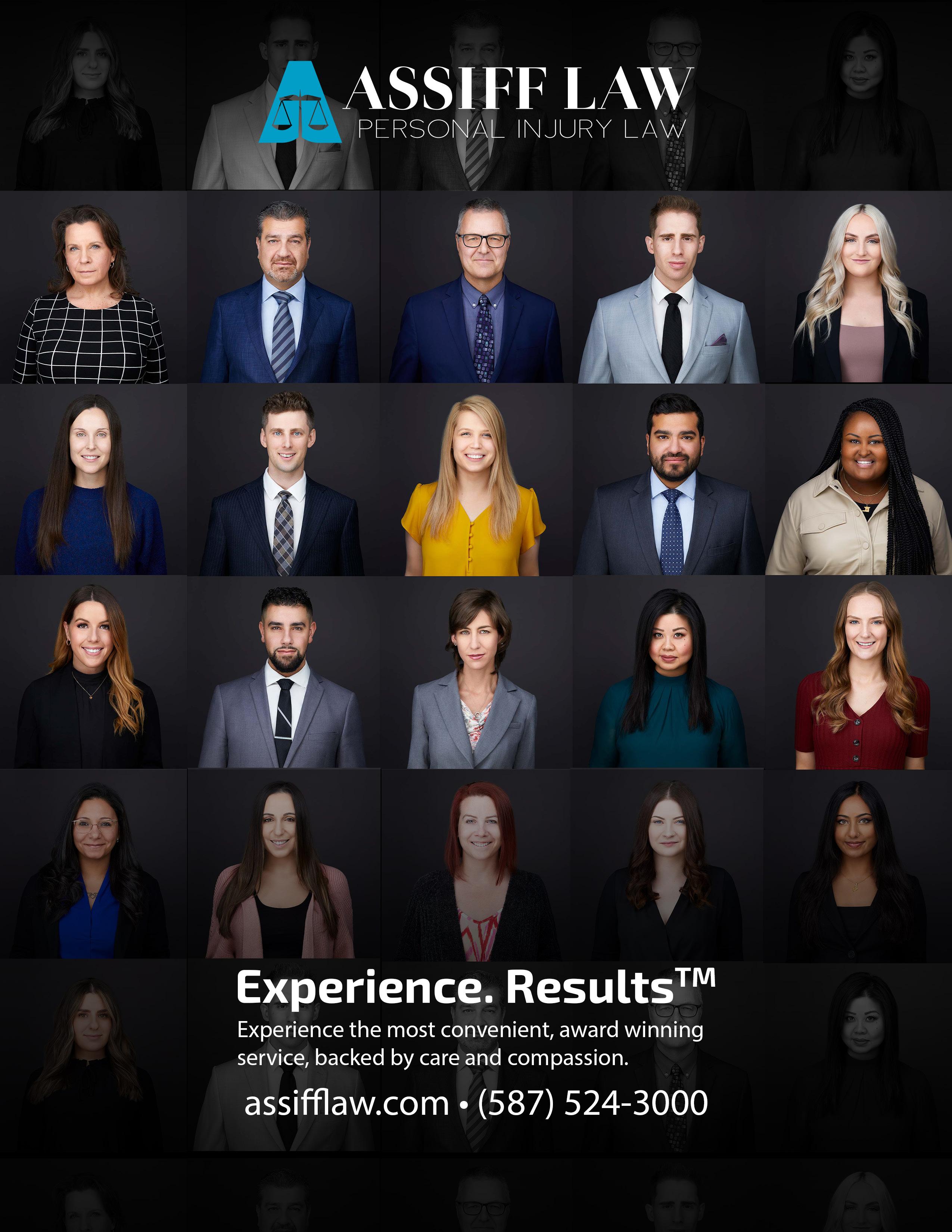
Our Divorce Financing provides a line of credit to your family law clients so they can pay their legal fees on time, allowing you to cover operating expenses more effectively.
Our loans are simple — we finance divorce proceedings in advance of the completion of the separation agreement and arrange financing based on your client’s projected equalization. Our client service team works with you to lend quickly and fairly, so your divorce files can move forward without delay.
